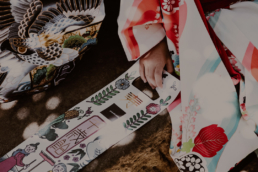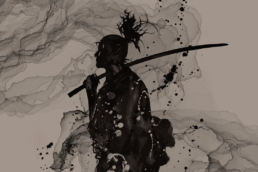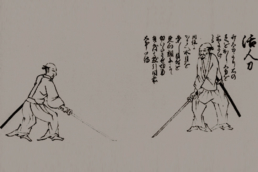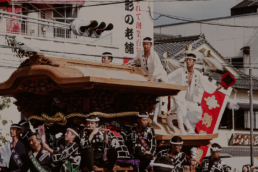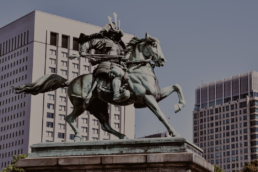Shichi-Go-San / Sette-Cinque-Tre
In Giappone il 15 novembre è il giorno di Shichi-Go-San (七五三, 7-5-3). Questo festival che celebra il rito di passaggio delle bambine di 3 e 7 anni e i bambini di 3 e 5 anni. Nella numerologia Giapponese questi numeri sono ritenuti particolarmente fortunati, come tutti i numeri dispari.

photo credits: cacadoresdelendas.com.br
Shichi-Go-San è il frutto di 3 tradizioni sviluppatesi nel periodo Heian, dapprima tra i nobili di corte i quali celebravano il passaggio dei loro figli alla “media infanzia”, successivamente nella classe Samurai segnando i passi importanti nella crescita. Fino a 3 anni il bambino doveva portare i capelli rasati, da questa età in su era loro concesso di portarli un po’ più lunghi. I maschi di cinque anni potevano indossare la hakama (袴, un indumento tradizionale che somiglia ad una larga gonna-pantalone lunga fino alle caviglie e legata alla vita) per la prima volta. Le bambine di sette anni invece, sostituivano le corde semplici usate per legare il proprio kimono con la tradizionale obi (帯, la tradizionale cintura di seta).
A partire dal periodo Meiji, la pratica fu adottata anche dai cittadini comuni introducendo la rituale visita un santuario shintoista per allontanare gli spiriti maligni e augurare ai propri bambini una vita lunga e prospera.
Shichi-Go-San e i sottili cambiamenti dell’era moderna
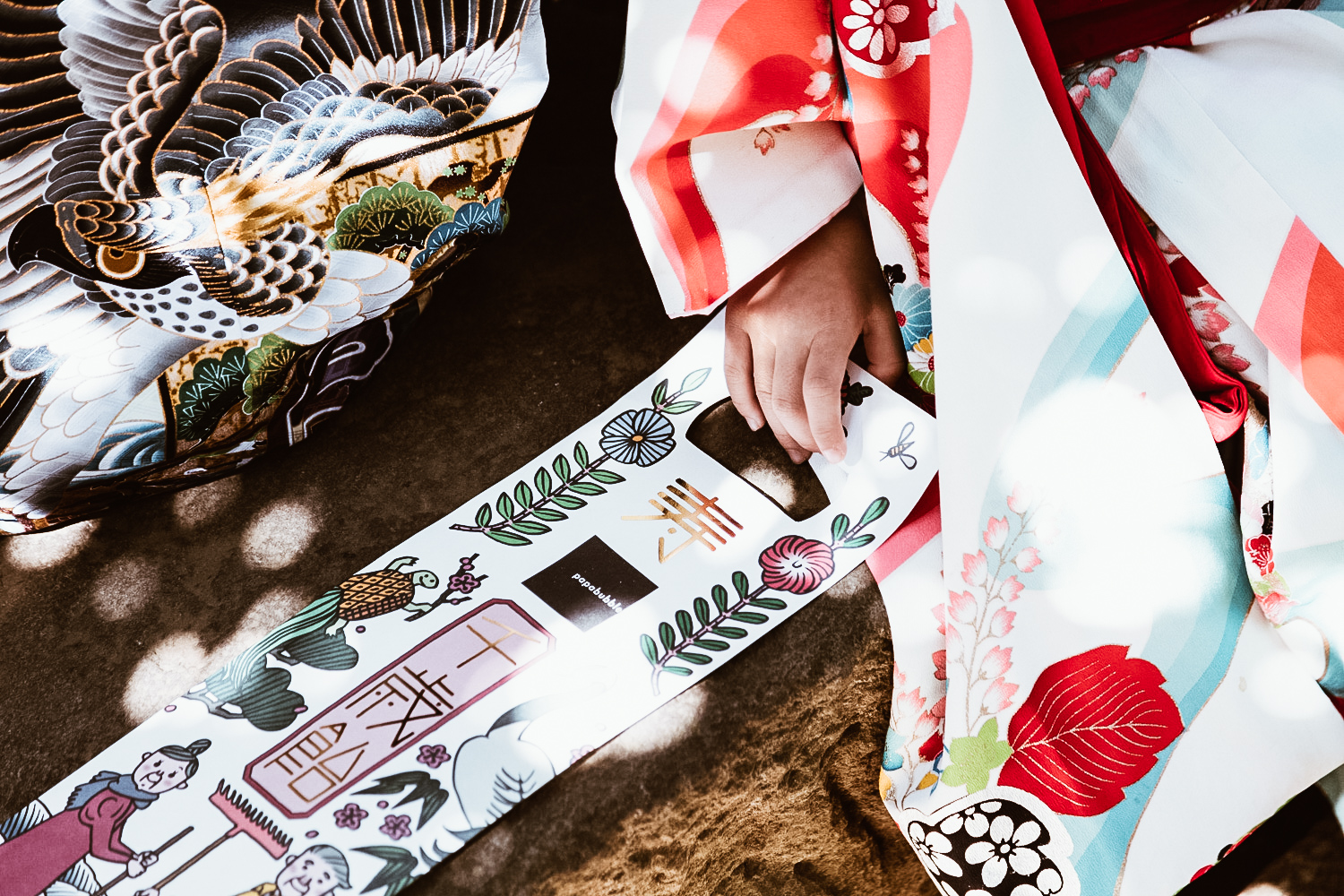
photo credits: amu-zen.com
Come la maggior parte delle tradizioni giapponesi, anche lo Shichi-Go-San mantiene quasi totalmente intatti i rituali del periodo Meiji. L’unica cosa caduta in disuso è la regola dei capelli. I bambini di cinque anni e le bambine di sette anni indossano ancora il kimono colorato per le visite ai santuari. Le bambine di tre anni solitamente indossano lo hifu (una veste simile ad un panciotto leggermente imbottito) insieme al proprio kimono. Alcuni bambini indossano abiti più vicini alle mode formali dell’occidente.
Oggi si scattano anche parecchie fotografie in questa occasione.
Ogni festeggiato, nel giorno dello Shichi-Go-San ruceve una busta decorata con all’interno le dolci Chitose ame (千歳飴), “la caramella dei mille anni”. Avvolte in carta di riso commestibile trasparente, queste caramelle ha forma di bastoncino, tradizionalmente di colore rosso e bianco sono simbolo di longevità.
Bushido: etica e condotta, la via del Samurai
Tra il periodo dello shogunato di Kamakura (1185) e il Periodo Muromachi (1336) prese forma il codice di condotta morale conosciuto come Bushido, (武士道, via del guerriero). Formalmente adottato e applicato dai “bushi”, i guerrieri (Samurai) nel Periodo Tokugawa (1603-1867), questo codice di condotta altro non è che un riadattamento dei principi del buddismo e confucianesimo. Originariamente riadattato alla casta dei guerrieri, dopo la Restaurazione Meiji (1866-1869), il movimento nazionalista giapponese adottò il Bushido come disciplina di comportamento.
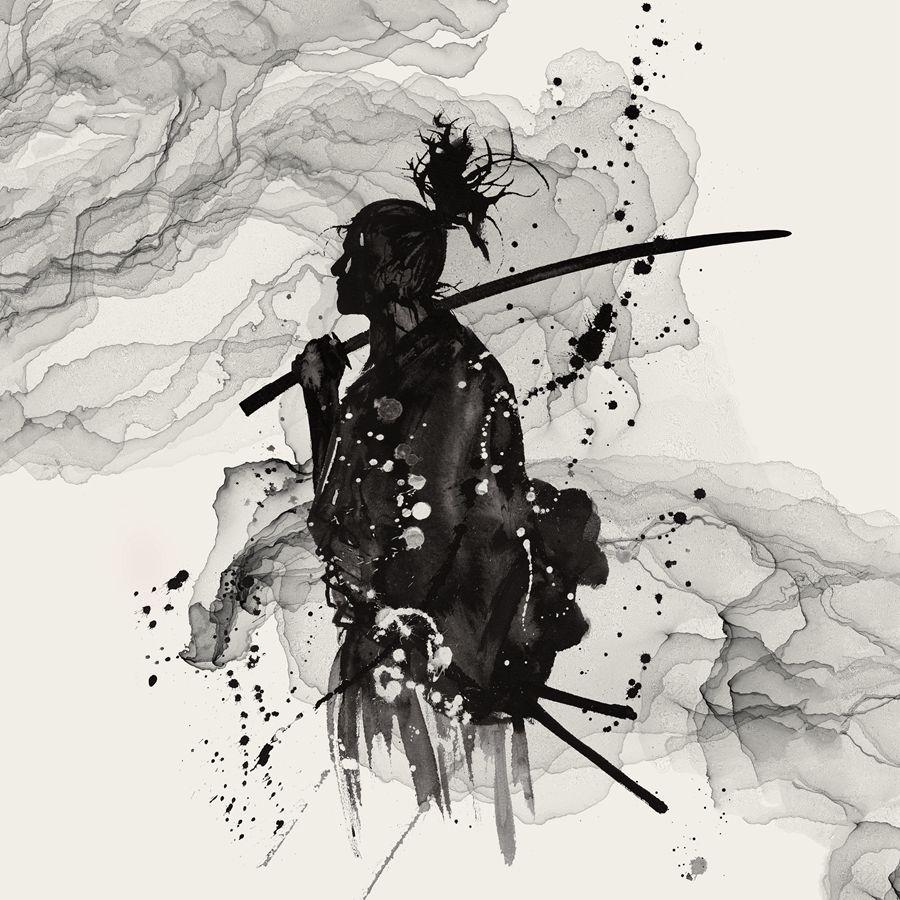
photo credits: camminospirituale.com
I 7 principi del Bushido: 7 passi verso la perfezione
Onestà, giustizia, pietà, dovere, onore e lealtà questi erano i princimi che dovevano essere perseguiti fino alla morte. Qualora questo non venisse seguito, la pena era il disonore da espiare attraverso il seppuku (切腹) o harakiri (腹切り). Entrambi questi termini indicano il rituale del suicidio in modo onorevole attraverso il taglio del ventre. Harakiri è utilizzato nel parlato, mentre seppuku è più utilizzato nella forma scritta.
Ogni Samurai era quindi tenuto a seguire 7 principi fondamentali che potremo definire come “morale perfetta”.
Addentriamoci in essi e scopriamoli insieme:
義, Gi: Onestà e Giustizia
Non esistono vie di mezzo, esiste solo il giusto o lo sbagliato. E’ necessario essere onesti nei rapporti con gli altri, credere fermamente nella giustizia che proviene da se stessi, non dalle altre persone. Il vero Samurai non ha mai incertezze riguardo all’onestà e alla giustizia
勇, Yu: Eroico Coraggio
L’eroico coraggio del Samurai si eleva sopra alla masse. Un guerriero non ha paura di agire, non si nasconde nel guscio come una tartaruga, nonostante il rischio ed il pericolo. Eroico coraggio significa vivere in modo completo, pieno, meraviglioso, esso non è cieco ma forte e intelligente.
仁, Jin: Compassione
L'intenso addestramento rende il samurai svelto e forte. È diverso dagli altri, egli acquisisce un potere che deve essere utilizzato per il bene comune. Possiede compassione, coglie ogni opportunità di essere d'aiuto ai propri simili e se l'opportunità non si presenta egli fa di tutto per trovarne una. La compassione di un Samurai va dimostrata soprattutto nei riguardi delle donne e dei bambini
礼, Rei: Gentile Cortesia
I Samurai non hanno motivi per comportarsi in maniera crudele, non hanno bisogno di mostrare la propria forza. Un Samurai è gentile anche con i nemici. Senza tale dimostrazione di rispetto esteriore un uomo è poco più di un animale. Il Samurai è rispettato non solo per la sua forza in battaglia ma anche per come interagisce con gli altri uomini. Il miglior combattimento è quello evitato.
誠, Makoto: Completa Sincerità
Quando un Samurai esprime l'intenzione di compiere un'azione, questa è praticamente già compiuta, nulla gli impedirà di portare a termine l'intenzione espressa. Egli non ha bisogno né di dare la parola né di promettere. Parlare e agire sono la medesima cosa.
名誉, Meiyo: Onore
Il Samurai è il solo giudice del proprio onore. Le decisioni che si prendono e le azioni che ne conseguono sono un riflesso di ciò che si è in realtà. Non ci si può nascondere da te stessi.
忠義, Chugi: Dovere e Lealtà
Per il Samurai compiere un'azione o esprimere qualcosa equivale a diventarne proprietario. Egli ne assume la piena responsabilità, anche per ciò che ne consegue. Il Samurai è immensamente leale verso coloro di cui si prende cura. Egli resta fieramente fedele a coloro di cui è responsabile.
Da diversi anni io stessa ho adottato queste 7 virtù come percorso da seguire. Trovo siano essenziali nella vita di ciascuno perchè siamo tutti dei guerrieri. Ogni giorno affrontiamo sfide e ogni giorno dobbiamo puntare a quella perfezione spirituale che, se fosse perseguita fino in fondo, condurrebbe ad un mondo migliore.
Voi siete pronti a compiere questi passi?
Japan History: Yagyū Munenori
Yagyū Munenori (1571 - 11 maggio 1646) era uno spadaccino giapponese, fondatore dello Yagyū Shinkage-ryū, uno dei due stili di spada ufficiali patrocinati dallo shogunato Tokugawa (l'altro era Ittō-ryū).
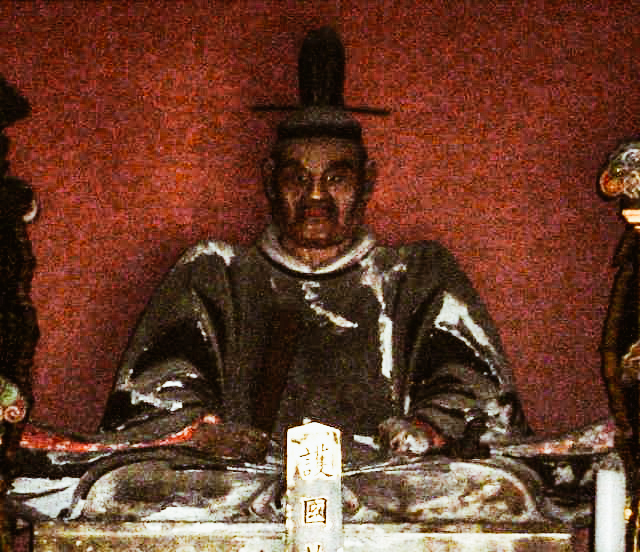
photo credits: wikipedia.org
Diventa un grande esperto dell’arte schermistica grazie ad un lungo percorso quasi monastico dedicato all’insegnamento presso la famiglia dello Shogun. Proprio in questo luogo scopriamo la sua vera natura: guida e consigliere politico di ben tre shogun e capo di un corpo di “intelligence” da lui creato. Yagyū Munenori guiderà il Giappone, in piena segretezza, per quasi trent’anni.
La carriera di Yagyū Munenori
Munenori iniziò la sua carriera nell'amministrazione Tokugawa come hatamoto, un diretto detentore della casa Tokugawa. In seguito il suo reddito fu aumentato a 10.000 koku, rendendolo un fudai daimyō, ovvero un signore vassallo al servizio dei Tokugawa. Successivamente, Yagyū Munenori ricevette anche il titolo di Tajima no Kami .
Munenori entrò al servizio di Tokugawa Ieyasu in giovane età, e più tardi divenne un istruttore di spada per il figlio di Ieyasu Hidetada. Divenne anche uno dei principali consiglieri del terzo shōgun Iemitsu.
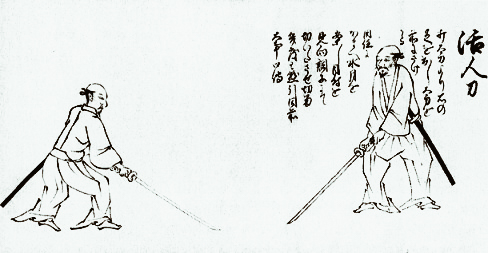
photo credits: doacademytorino.wordpress.com
Poco prima della sua morte nel 1606 passò la guida dello Yagyū Shinkage-ryū a suo nipote Toshiyoshi. Dopodichè, Toshiyoshi entrò al servizio di un ramo del clan Tokugawa che controllava la provincia di Owari. La scuola di Toshiyoshi aveva sede a Nagoya e venne chiamata Owari Yagyū-ryū, mentre quella di Munenori, a Edo divenne nota come Edo Yagyū-ryū. Takenaga Hayato, il fondatore dello Yagyū Shingan-ryū, era suo discepolo e ricevette da lui degli insegnamenti segreti (gokui) dello Yagyū Shinkage-ryū.
Intorno al 1632, Munenori completò Heihô Kadenshô, un trattato sulla pratica di spada di Shinkage-ryū e su come potesse essere applicato alla vita e alla politica. Il testo è ancora in stampa oggi in Giappone ed è stato tradotto più volte in inglese. Tradotto in italiano: “La spada che dà la vita” è un’avvincente biografia di Munenori e una serie di tecniche di spada.
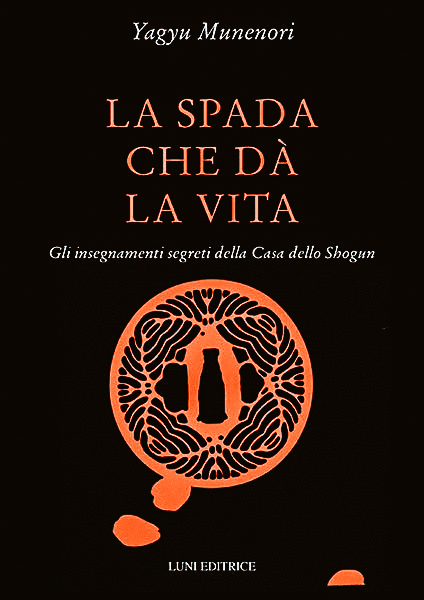
photo credits: www.lunieditrice.com
Anche i suoi figli, Yagyū Jūbei Mitsuyoshi e Yagyū Munefuyu erano famosi spadaccini.
Kitsunebi Matsuri, quando il folklore prende vita
Nell’antico folklore giapponese, il Kitsunebi (狐火, fuoco di volpe) era uno yōkai che, durante la notte, appariva improvvisamente sotto forma di luce incandescente dal colore rosso-arancione e talvolta anche blu. I Kitsunebi aumentavano gradualmente fino a coprire vaste aree, raggiungendo anche i 4km! Si credeva che fossero torce di una processione di volpi che marciavano per le proprie nozze. Le luci venivano avvistate dagli agricoltori sulle montagne ed erano considerate un buon presagio per il raccolto. Infatti, maggiore era il numero di luci vista, più fruttuoso era il raccolto. Tuttavia a nessun umano era concesso di avvicinarsi: coloro che ci provavano erano condannati a svanire.
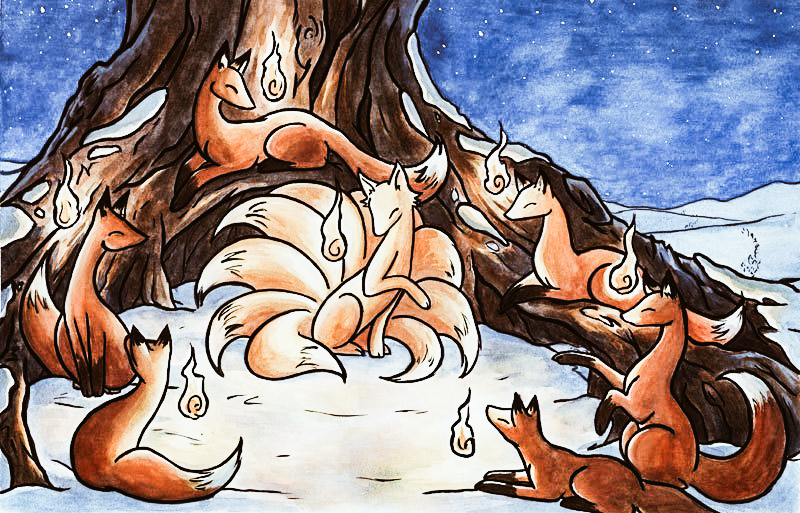
photo credits: tradurreilgiappone.com
In particolare, nelle storie si racconta del matrimonio tra Otonosama, il re che viveva a Furukawa, e Okon, la figlia del dio volpe. Questa affascinante immagine è l’origine su cui affonda le sue radici l’Hida Furukawa Kitsunebi Matsuri (騨古川きつね火まつり). Questo festival si celebra ogni anno, il quarto sabato di settembre a Hida Furukawa, cittadina pittoresca e rurale ricca di splendidi paesaggi, dove ancora oggi si respira una vita lontana dalla frenesia delle metropoli.
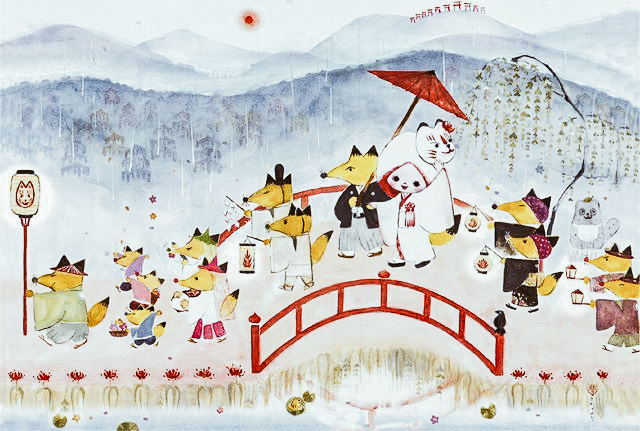
photo credits: tradurreilgiappone.com
Felicità e prosperità!
Come quasi tutti i festival a cui ormai siamo abituati, anche il Kitsunebi Matsuri ha come scopo le benedizioni per il raccolto, la felicità e la prosperità per le famiglie.
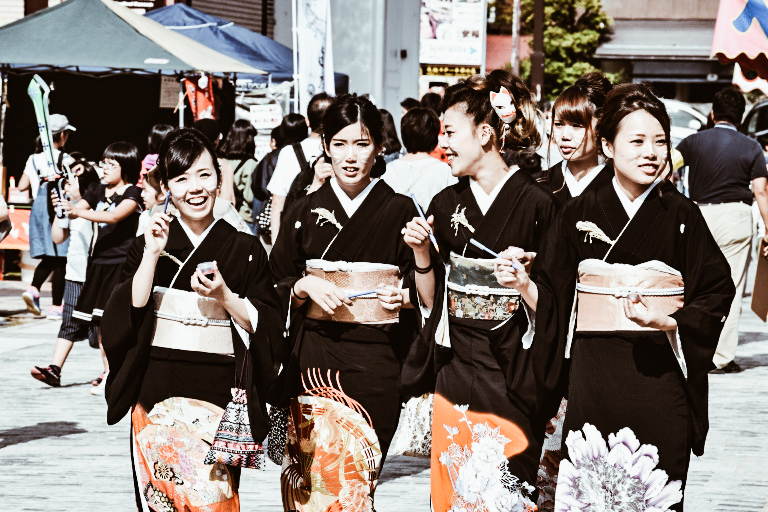
photo credits: myjapantravels.wordpress.com
Ma in cosa consiste esattamente il Kitsunebi Matsuri?
Prima di tutto, tutti i partecipanti hanno i baffi di volpe disegnati sul volto, che sia bambini o anziani, negozianti sulla strada oppure turisti. Si comincia con la benedizione delle imprese locali: i danzatori trasportano porta a porta un dongamaki, serpente di corda lungo 5 metri.
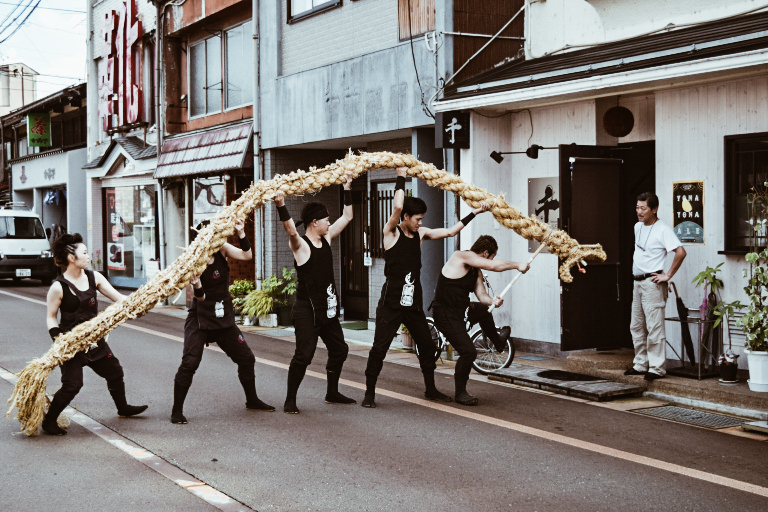
photo credits: myjapantravels.wordpress.com
Dopo di chè ha inizio l’evento principale. Su due piedi si potrebbe dire che si tratti di un matrimonio, ma non uno comune, bensì una processione solenne in cui si celebrano le nozze delle volpi, il Kitsune no Yomeiri.

photo credits: myjapantravels.wordpress.com
I futuri sposi, una coppia legata nella vita reale, vengono scelti da un pool di candidati a livello nazionale nella cittadina in cui si terrà la cerimonia nuziale. La lunga marcia condurrà la sposa dallo sposo al calare della notte, quando il Kistunebi ha inizio (una fiaccolata). Coloro che assistono a tutta la processione saranno benedetti e potranno esprimere un desiderio come un buon raccolto, oppure la felicità per la propria famiglia o la prosperità negli affari.

photo credits: tokyopic.com
Una romantica curiosità
Dal 1392, per tutto il periodo Muromachi fino alla fine del XIX secolo, quando le cerimonie nuziali occidentali sostituirono le tradizionali cerimonie giapponesi, i matrimoni si tenevano di notte e la sposa veniva scortata nella sua nuova casa da una parata di luci.
Japan History: Shimazu Takahisa
Shimazu Takahisa nacque il 28 maggio 1514, figlio di Shimazu Sagami no kami Tadayoshi (1492-1568), adottato da Shimazu Katsuhisa. Divenne il signore di Kagoshima dopo la fuga di Katsuhisa nel 1526. Conquistò la suddetta città nel 1536 ed estese la sua autorità in tutta la provincia di Satsuma.
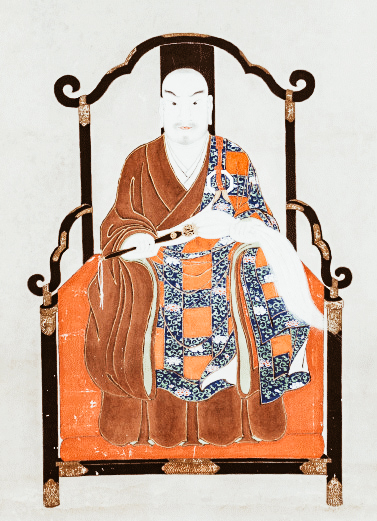
photo credits: wikipedia.org
Fu uno dei primi daimyō ad impiegare armi da fuoco in battaglia durante l'assedio di Kajiki nella provincia di Ōsumi nel 1549. In quello stesso anno, accolse Francis Xavier a Kagoshima. Concesse la protezione dei Gesuiti per diffondere il cristianesimo nel suo dominio,ritirato successvamente sotto la pressione dei monaci buddisti locali. Takahisa ebbe anche relazioni diplomatiche con il Regno delle Ryūkyū.

photo credits: pinterest.com
15° capo del clan Shimazu, supervisionò il trasferimento della sede del clan dal castello di Shimizu al castello di Uchi nel 1550 quando mandò Ijūin Tadaaki a Shimizu per sopprimere le ribellioni e assicurare il controllo degli Shimazu sulla provincia. Nel 1554 le sue truppe vinsero contro i clan Hishikari, Kamō e Ketō durante l'assedio di Iwatsurugi. Suo figlio Shimazu Yoshihisa in seguito avrebbe completato la sconfitta di questi clan e assicurato il controllo degli Shimazu sul resto della provincia di Satsuma.
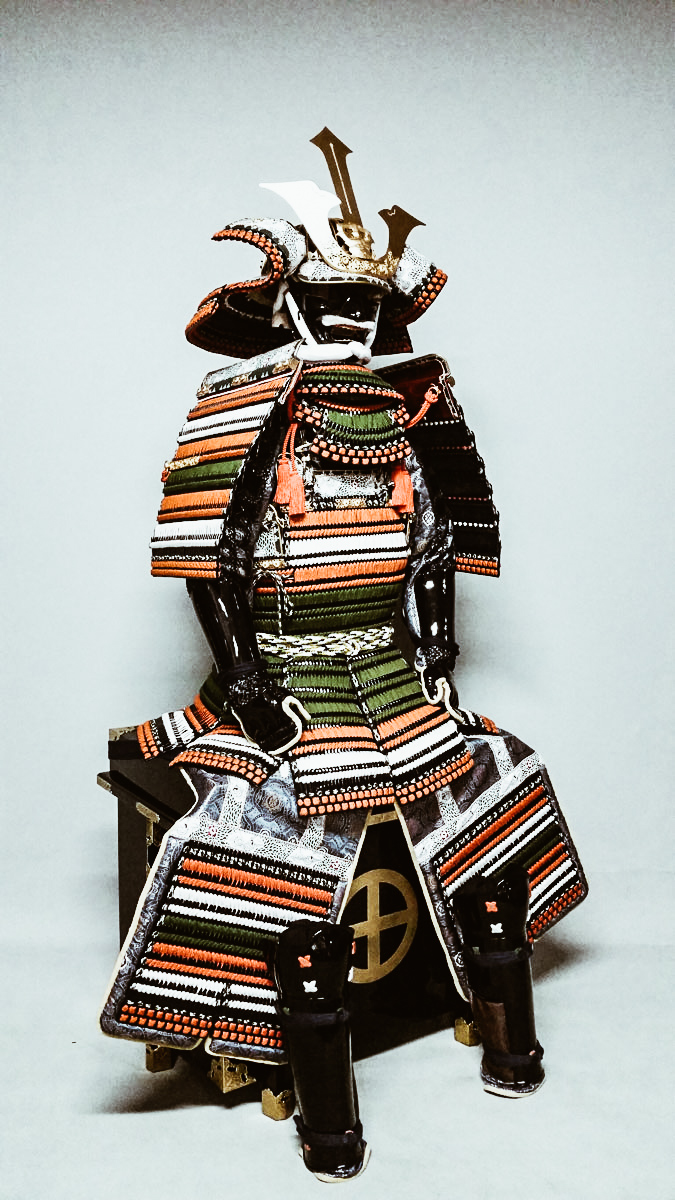
photo credits: global.rakuten.com
Si ritirò ufficialmente in favore di Yoshihisa nel 1566 e nel 1569 vennero sconfitti i clan Iriki-in e Tōgō e si assicurò il controllo su Satsuma. L'anno seguente respinse un attacco navale da parte di membri dei clan Kimotsuki, Ijiki e Nejime. Morì il 15 luglio 1571.
Molto importante la sua idea di promuovere le relazioni con persone e paesi stranieri.
I suoi figli furono Yoshihisa, Yoshihiro, Iehisa e Toshihisa.

photo credits: wikipedia.org
Il Kishiwada Danjiri Matsuri e l'euforia dilagante
Ritorniamo a raccontarvi dei festival giapponesi e oggi parliamo del Kishiwada Danjiri Matsuri.
Ogni anno, generalmente durante un fine settimana a metà settembre, le strade di Kishiwada, piccola cittadina vicina ad Osaka, sono invase dal fervore e dall’euforia del Kishiwada Danjiri Matsuri (岸和田だんじり祭).
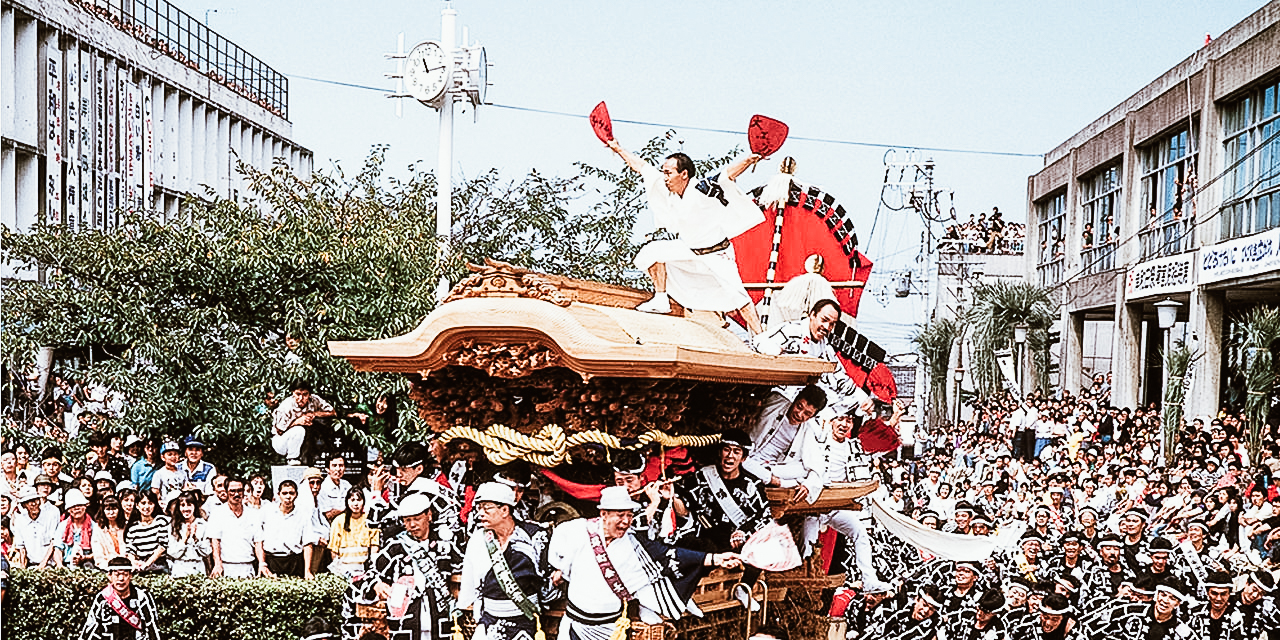
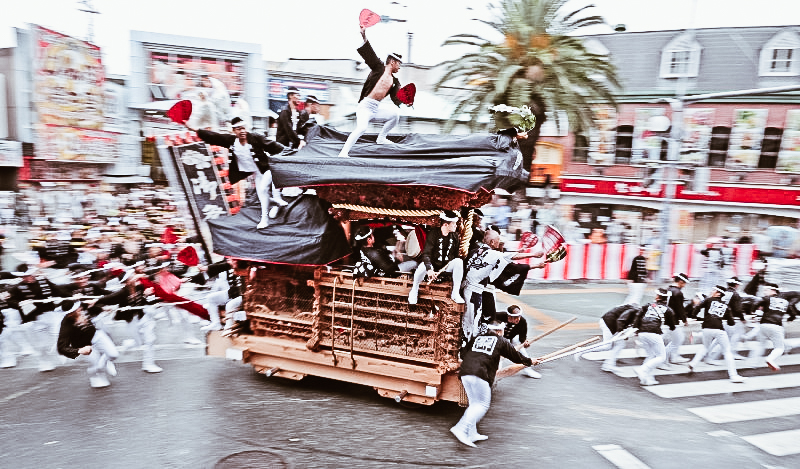
photo credits: airfrance.co.za, mainichi.jp
Le celebrazioni ebbero origine nel 1703, ad opera del daimyō Okabe Nagayasu (岡部長泰). Egli pregò gli dei shintoisti per un raccolto abbondante e questo è ancora il significato del festival. Tuttavia, ciò che rende particolare questa celebrazione è che si tratta di una gara di velocità trainando i danjiri.
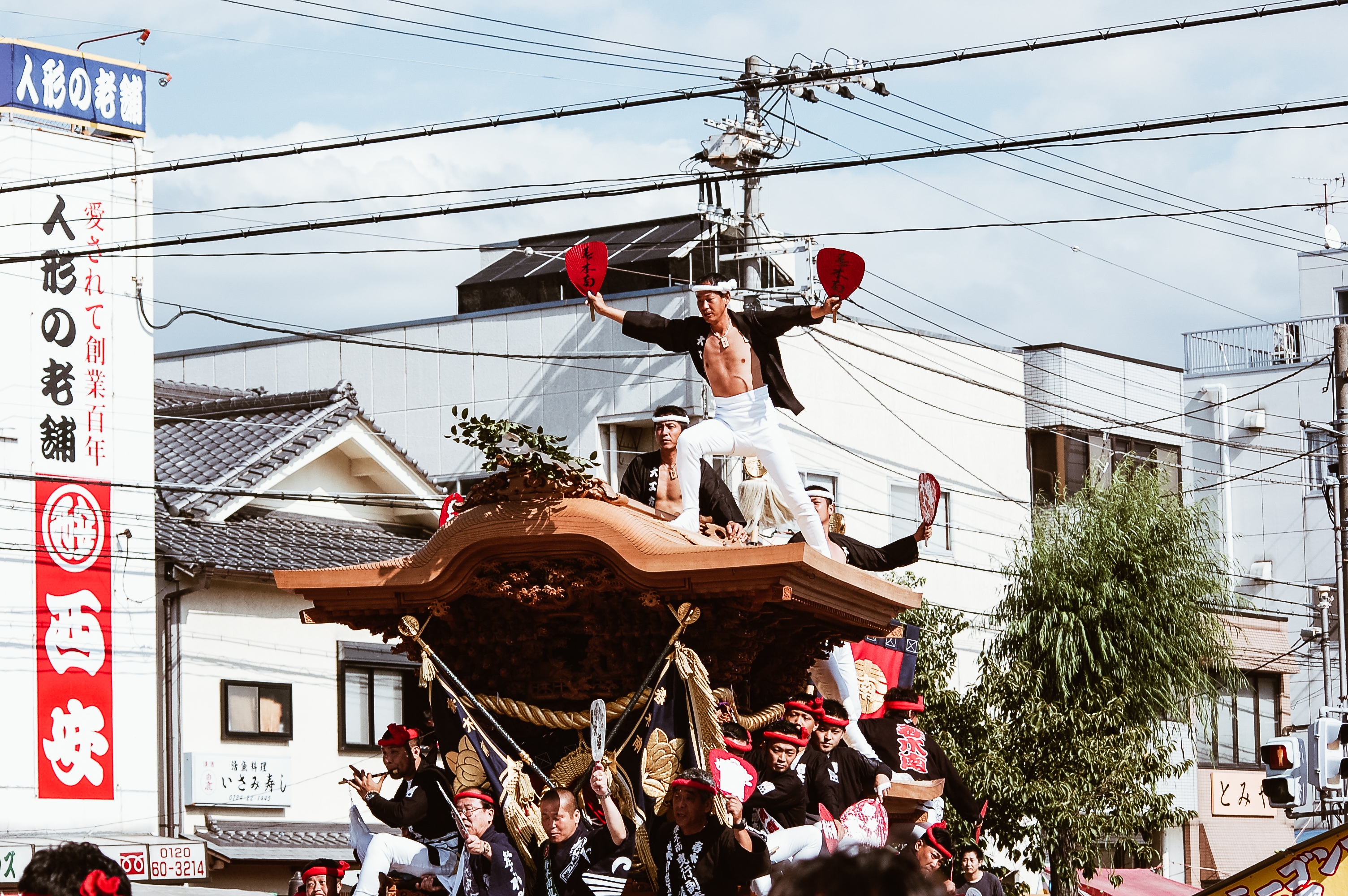

photo credits: Justin Yoshida
I danjiri sono delle tradizionali strutture in legno, intagliati e finemente decorati realizzati da abili falegnami e scultori locali. Questi carri hanno la forma di piccoli santuari contenenti le divinità e, nei giorni del festival, vengono appunto trascinati per le strade del quartiere. Visto il loro peso (possono superare i 3 quintali), il festival è anche considerato un momento per dimostrare il proprio coraggio. Infatti, queste strutture devono essere trainate con il solo aiuto delle corde e a tutta velocità!
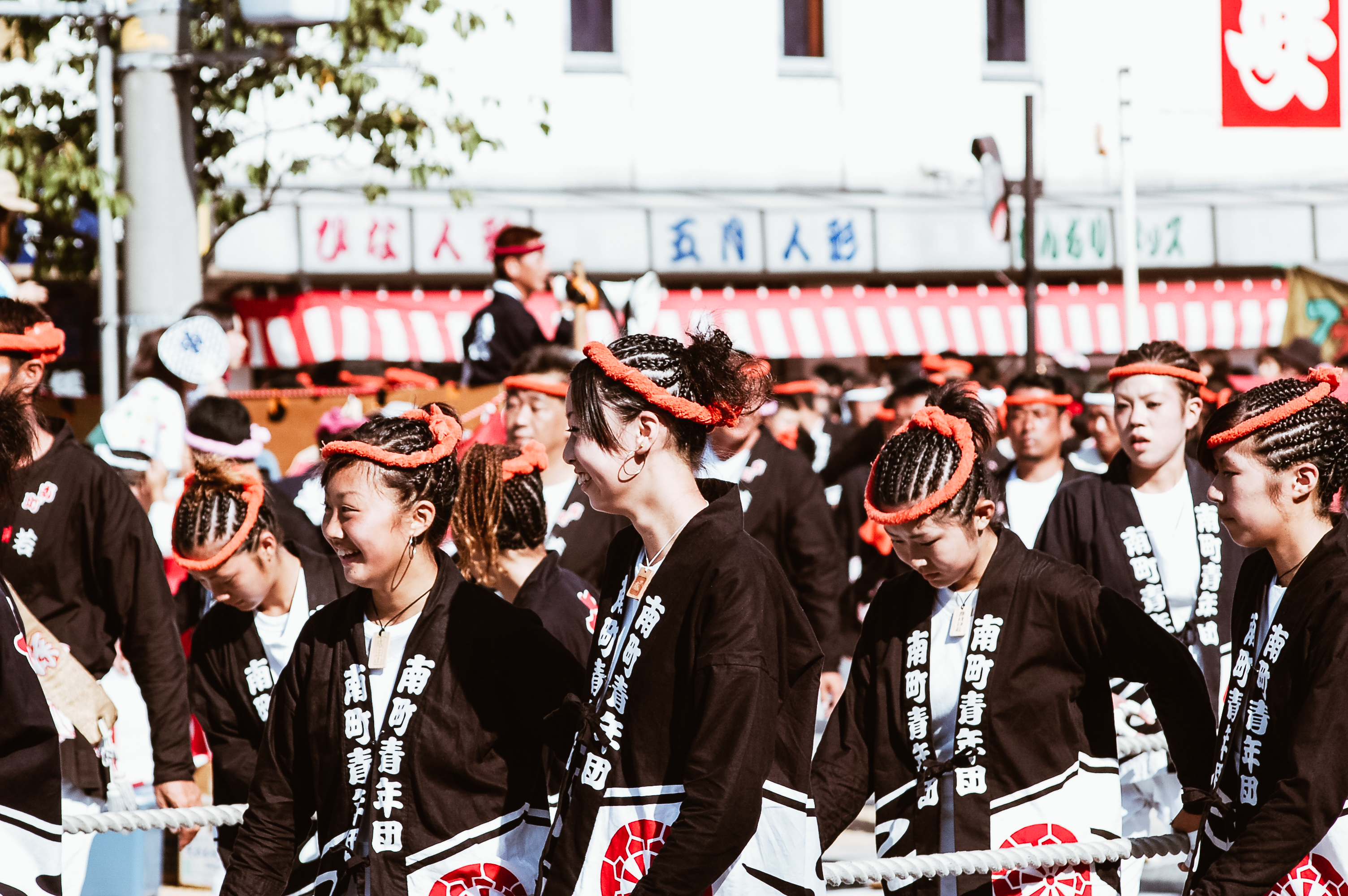
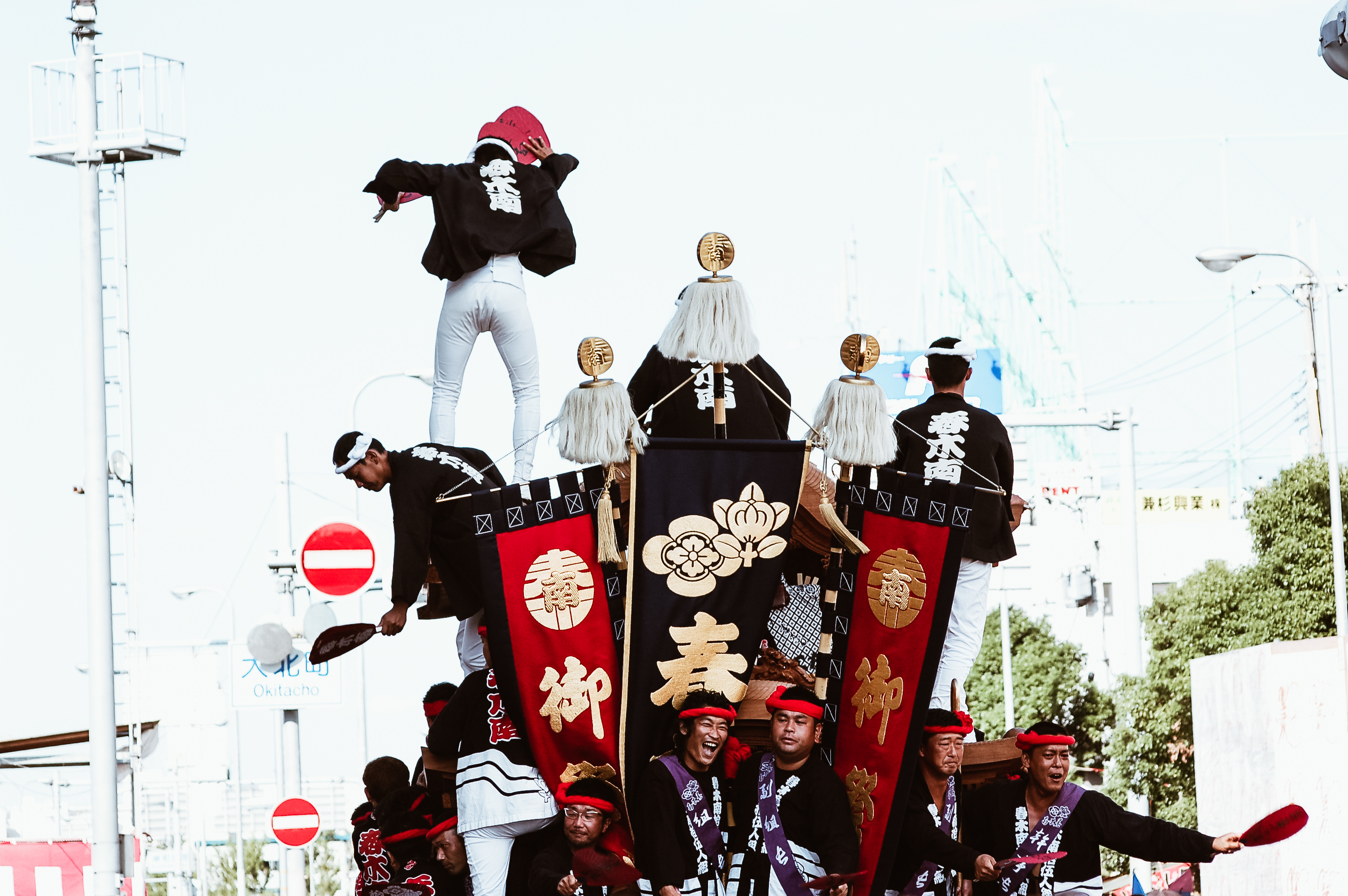
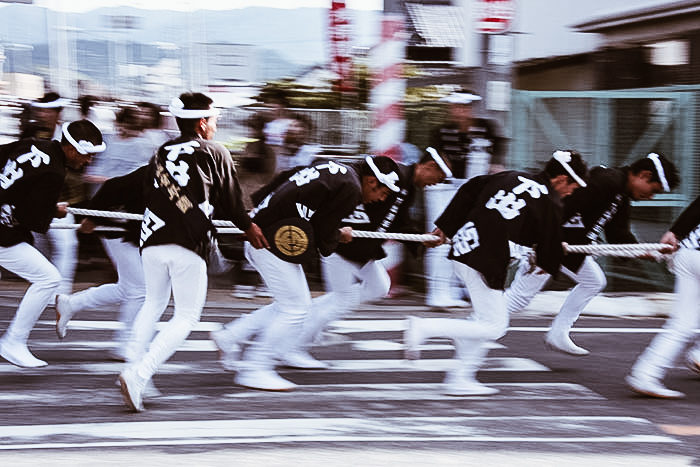

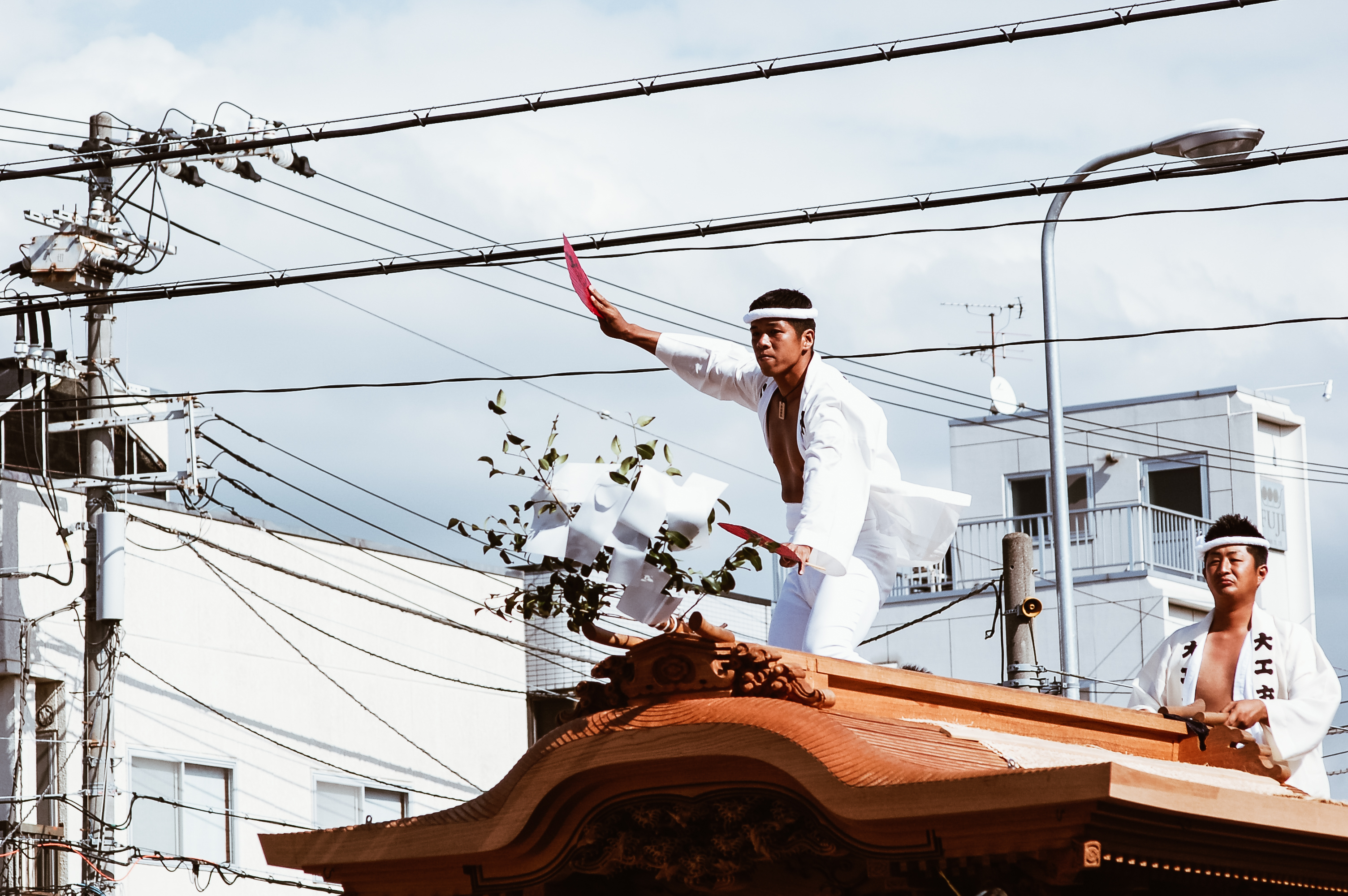
photo credits: Justin Yoshida, Justin Yoshida, japan-magazine.jnto.go.jp, MJY-shogun, Justin Yoshida
Le celebrazioni del Kishiwada Danjiri Matsuri
Durante le celebrazioni del festival i danjiri coinvolti sono 35, ognuno di essi trainato da un team, rappresentanti il rispettivo distretto della città. Al controllo della struttura, sulla sua cima, c’è il daiku-gata (大工方, maestro artigiano) la cui danza selvaggia serve da incoraggiamento per la propria squadra e la folla. Viste le acrobazie in cui si cimenta, il maestro artigiano rischia costantemente la vita, ma non solo! Come possiamo facilmente immaginare, questo festival è anche pericoloso per tutti gli altri partecipanti a causa della velocità vertiginosa dei danjiri. Le schegge di legno che si lasciano alle spalle e le sgomitate per seguirli costituiscono un pericolo per la folla. Quattro ore di corsa a perdifiato che si conclude con una grande bevuta attorno al proprio carro, a cui vengono appese decine di lanterne di carta.
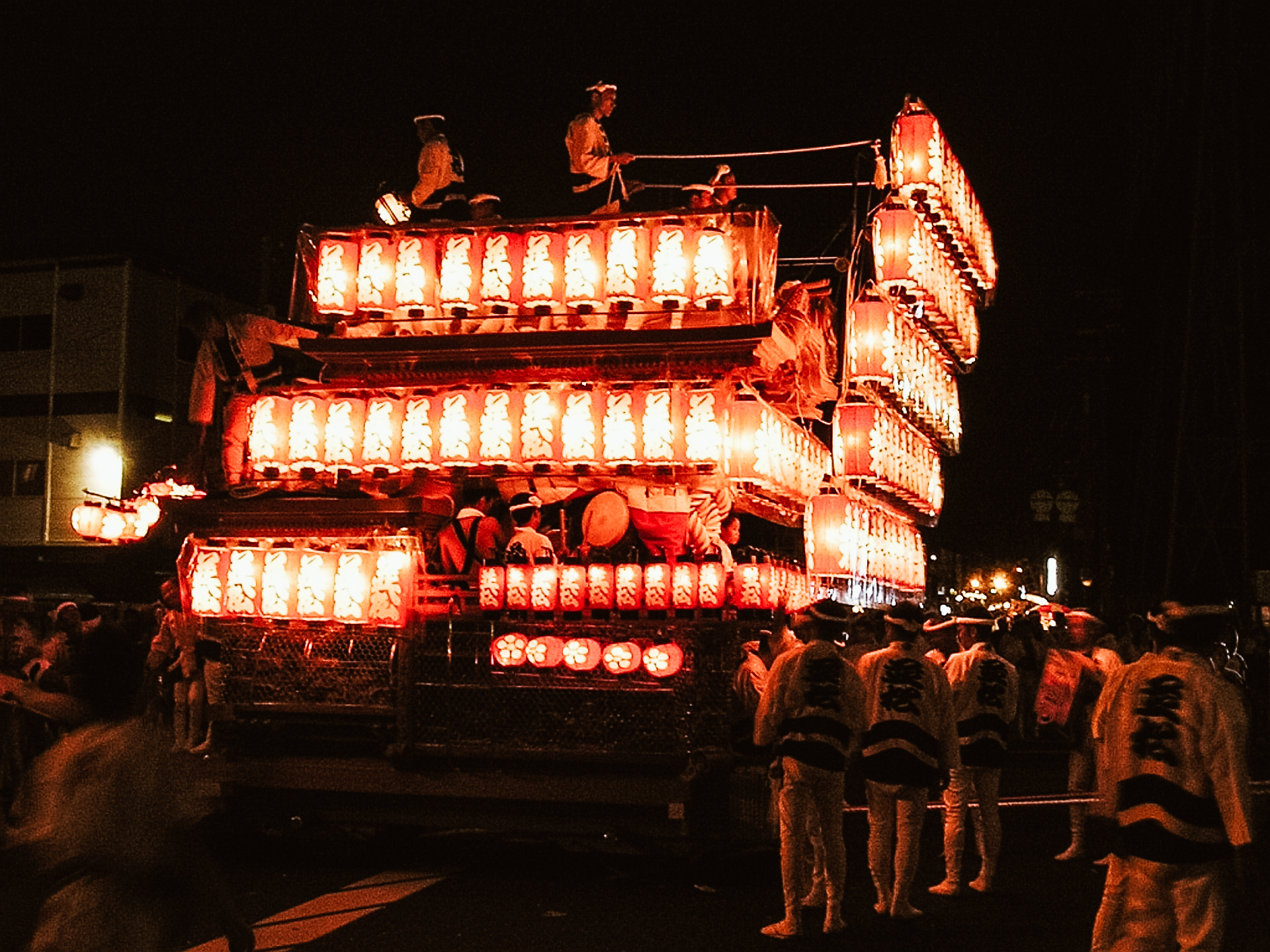
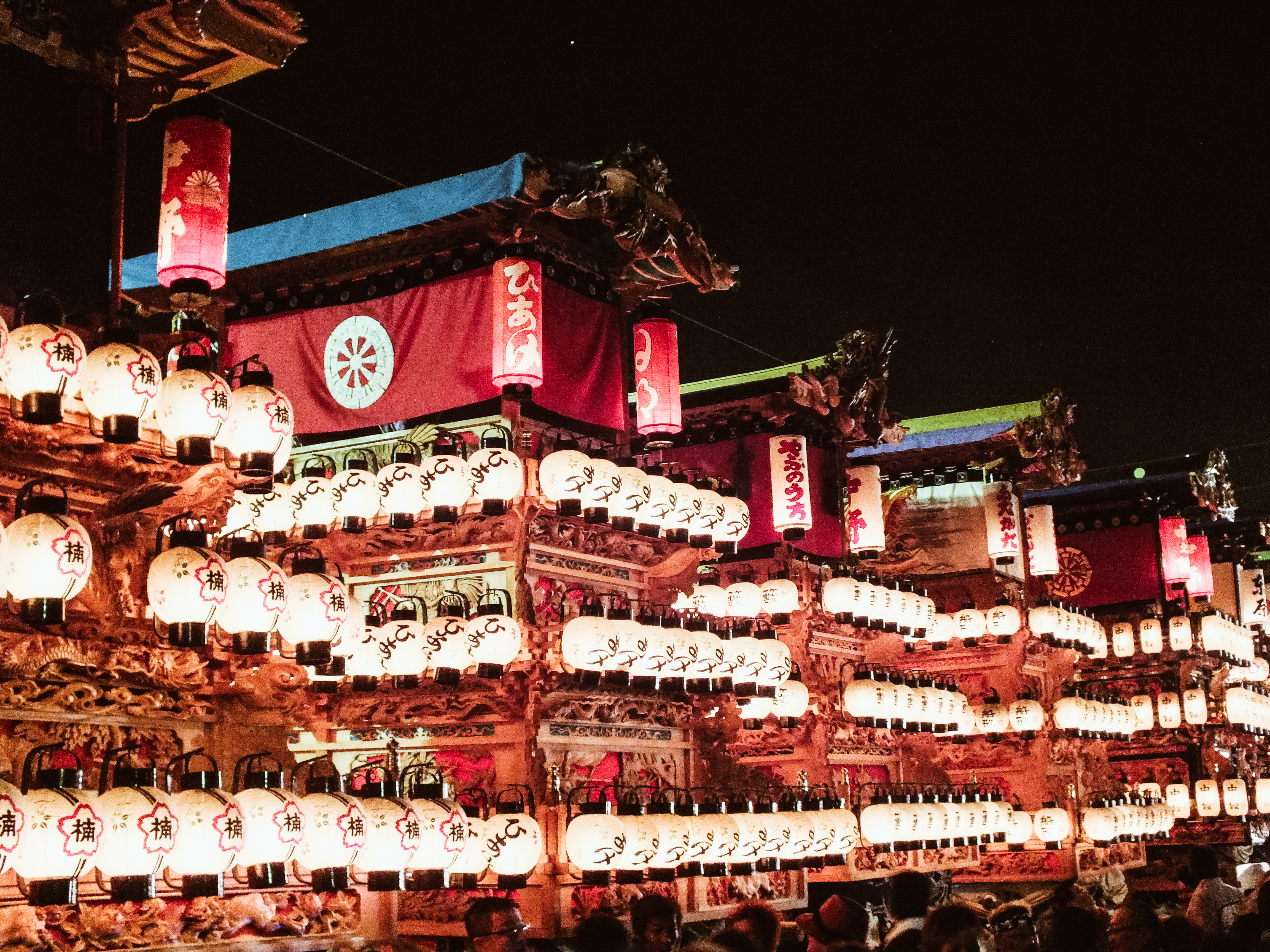
photo credits: rove.me, Gavin Kealy
Più di 500,000 visitatori arrivano a Kishiwada per vivere il brivido di questa celebrazione, voi cosa ne pensate? Trovate elettrizzante questa parata?[:en]Let's return to talk about Japanese festivals and today we talk about the Kishiwada Danjiri Matsuri.
Japan History: Kusunoki Masashige
Kusunoki Masashige, (1294 - 4 Luglio 1336) nacque a Minato-gawa, provincia di Settsu, e fu un samurai del XIV secolo che combatté per l'imperatore Go-Daigo nella guerra di Genkō.
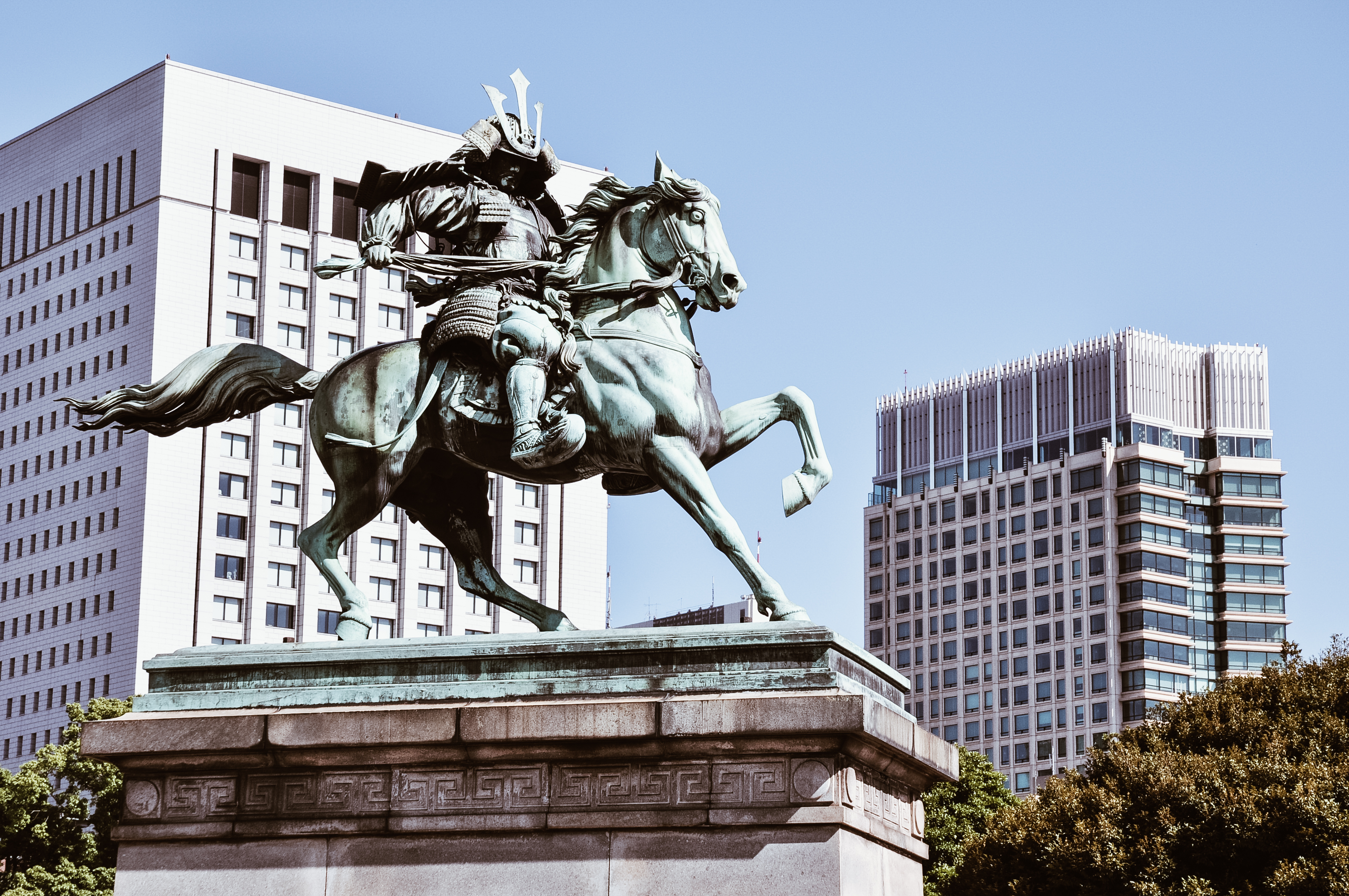
photo credit: ninja.fandom.com
Gran parte della sua prima educazione avvenne nel tempio di Kanshin-ji a Kawachinagano, nel sud di Osaka, dove più tardi avrebbe organizzato notevoli restauri.
La leggenda narra che l'imperatore Go-Daigo fece un sogno in cui si stava rifugiando sotto un albero di canfora ( il “kusunoki ). Questo sogno lo portò al cognome del guerriero che lo avrebbe sostenuto. Infatti, nel 1331 Kusunoki si unì all'imperatore Go-Daigo in una rivolta per strappare il potere del governo dallo shogunato, la dittatura militare che aveva dominato il Giappone dal 1192. Sebbene le truppe shogunate numericamente più forti catturarono l'imperatore, Kusunoki fuggì continuando ad usare tattiche di guerriglia.
La cattura di Kusunoki vicino a Nara nel 1332 si rivelò una grave minaccia per il governo. Lo shogun concentrò quindi tutte le sue forze contro Kusunoki. In una delle battaglie più famose della storia giapponese, Kusunoki difese con successo la fortezza di Chihaya contro le forze shogunali superiori.
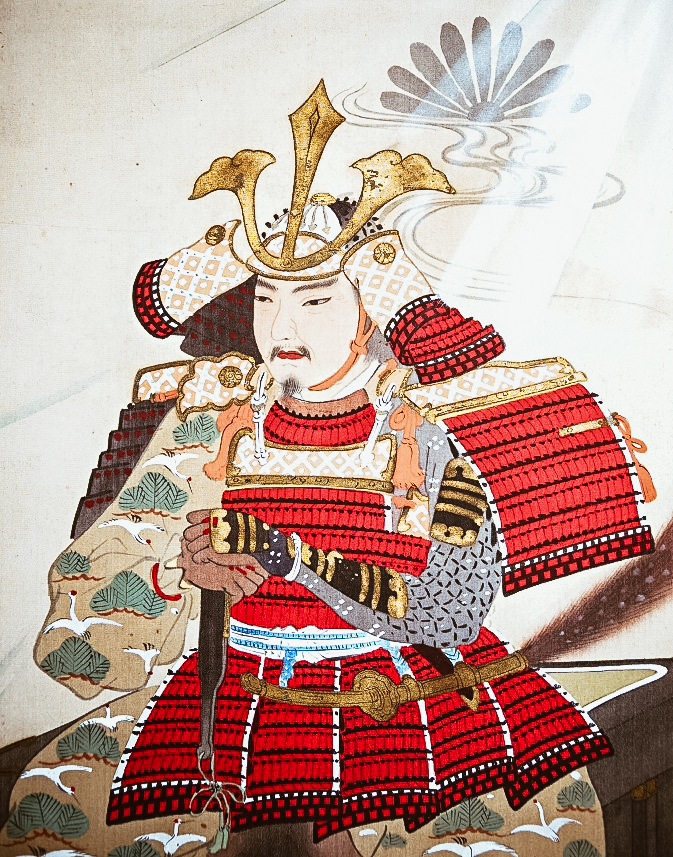
photo credit: davtov2000.blogspot.com
Dal 1333 al 1335
Nel 1333, Go-Daigo ricompensò Masashige con il governatorato della provincia di Settsu e della provincia di Kawachi e la promozione al quinto grado. Successivamente, ricevette la nomina nel Records Office and Settlement Board. Tuttavia, uno dei generali lealisti, Ashikaga Takauji, tradì Go-Daigo e guidò un esercito contro Kusunoki. Takauji si impossessò di Kyoto, ma solo temporaneamente prima che Nitta Yoshisada e Masashige costrinsero Takauji a fuggire. Nel 1336 Takauji era di nuovo una minaccia per Kyoto.
Durante il breve periodo successivo del dominio imperiale, Kusunoki fu governatore delle province giapponesi centrali di Settsu. Il vero potere nelle campagne, tuttavia, continuò a essere detenuto dai grandi signori ereditari, Ashikaga Takauji e Nitta Yoshisada. Questi ultimi si sfidarono apertamente per ottenere la lealtà dei capi minori feudali.
Kusunoki suggerì all'Imperatore di rifugiarsi sul sacro Monte Hiei e permettere a Takauji di prendere Kyoto. Questo per permettergli di scendere dalla montagna e, con l'aiuto dei monaci del Monte Hiei, intrappolare Takauji.
Go-Daigo non era disposto a lasciare la capitale e insistette sul fatto che Kusunoki incontrasse le forze di Takauji sul campo. Kusunoki, in quello che sarebbe poi stato visto come l'ultimo atto di lealtà dei samurai, accettò obbedientemente. La battaglia, che ebbe luogo a Minatogawa, nell'odierna Chūō-ku, Kobe, fu un disastro tattico. Ci sono due resoconti della proposta fatta da Kusunoki Masashige all'imperatore Go-Daigo, il Taiheiki e il Baisho Ron, entrabe ingorati. Uno era che si sarebbero raggruppati e avrebbero attaccato da due parti, l'altro era che riportare il generale Takauji dalla loro parte.
L’esercito di Kusunoki era solo 50 dei 700 cavalieri. Secondo la leggenda, le ultime parole di suo fratello Masasue furono Shichisei Hōkoku! ("Vorrei avere sette vite da dare al mio imperatore!”). Ovviamente Kusunoki Masashige fu d'accordo.
Alla sua morte, la sua testa fu inviata a Kanshin-ji e sepolta in una tomba nota come Kubi-zuka.
Il castello di Eboshigata e il castello di Ishibotoke furono entrambi costruiti lungo il percorso del Koya Kaido, una famosa via di pellegrinaggio che si estende tra Kyoto e Koyasan. Progettati non solo per proteggere la pista dai banditi, questi erano anche un'importante fonte di reddito visto che i viaggiatori erano obbligati a pagare un pedaggio.
Dal 1335 alla restaurazione Meiji
Nel 1335 Go-Daigo si schierò con Nitta Yoshisada contro Ashikaga Takauji. Come capo delle forze imperiali, Kusunoki sconfisse le truppe di Takauji nel gennaio 1336 e lo costrinse a fuggire dalla capitale. Pochi mesi dopo, tuttavia, Takauji tornò alla testa di un grande esercito. Kusunoki suggerì di ritirarsi temporaneamente in modo da poter combattere le forze di Takauji in un punto in cui il terreno era più favorevole. L'imperatore insistette sul fatto che Kusunoki incontrasse le forze nemiche prima di occupare la capitale. Nella battaglia finale sul fiume Minato, vicino al moderno Kōbe, Kusunoki combatté coraggiosamente per molte ore. Le sue truppe furono infine sopraffatte e si suicidò piuttosto che affrontare la cattura.
Suo figlio, Kusunoki Masatsura, servì il successore dell'imperatore, il dodicenne Go-Murakami, in una relazione di reciproca fiducia che rispecchiava la figura di suo padre Kusunoki e manteneva viva la fiamma della resistenza lealista.
Dopo il restauro imperiale del 1868, uno splendido santuario fu eretto sul luogo della morte di Kusunoki. La sua lealtà verso l’imperatore ed il suo essere uno dei più grandi strateghi militari della storia giapponese, lo hanno reso una figura leggendaria. Ha anche ricevuto la più alta decorazione dal governo giapponese Meiji nel 1880

photo credit: wikipedia.org
Leggenda
Dopo l'introduzione del Neoconfucianesimo come filosofia statale da parte dello shogunato Tokugawa, Kusunoki Masashige fu dichiarato con l'imperatore Go-Daigo precursore degli assolutisti sinocentrici. Durante il periodo Edo, studiosi e samurai che furono influenzati dalle teorie neoconfuciane crearono la leggenda di Kusunoki. Lo consacrarono eroe patriottico, col nome di Nankō o Dai-Nankō, incarnazione di lealtà, coraggio e devozione all'Imperatore. Kusunoki divenne in seguito una sorta di santo patrono dei kamikaze della Seconda Guerra Mondiale. I suoi eredi spirituali erano quelli che sacrificavano la propria vita per l'imperatore.
Hiroshima e Nagasaki, per non dimenticare
Hiroshima e Nagasaki, due città simbolo del Giappone che ci ricordano del più grande errore che l'umanità abbia fatto.
La triste eredità di Hiroshima e Nagasaki
Situata a ovest di Honshū e rivolta verso il mare, sorge Hiroshima (広島市) la città portuale più grande del Chugoku.

photo credits: viaggi-lowcost.info
Hiroshima
Fondata dal daimyō Mōri Terumoto nel 1589, Hiroshima passò in mano a varie amministrazioni. Nel 1938 diventò una sede bellica di importanza strategica e militare per tutta la seconda guerra mondiale. Nessun bombardamento si abbattè sulla città, fino a quel tragico 6 agosto 1945, alle 08:16:08. "Little Boy", la prima bomba atomica mai usata in un conflitto, fu lanciata dagli Stati uniti sulla città causando migliaia di vittime all'istante. Tuttavia, queste aumentarono nei mesi successivi a cause del fallout radioattivo. Nonostante la radioattività, la città venne ricostruita nel 1949 riacquistando la propria importanza industriale.
I danni causati dalla bomba atomica perdurarono negli anni successivi e nel 1955 fu istituito il centro medico Hijiyama, dove accogliere, studiare e curare i malati. Nei primi anni 70 nacque la "Atomic Bomb Casualty Commission" per il controllo del terreno e dell'aria.
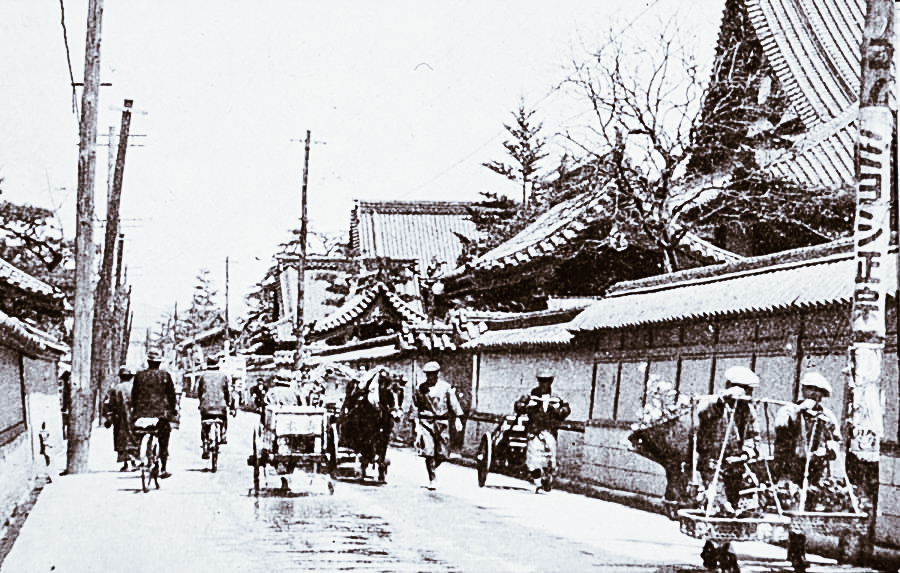
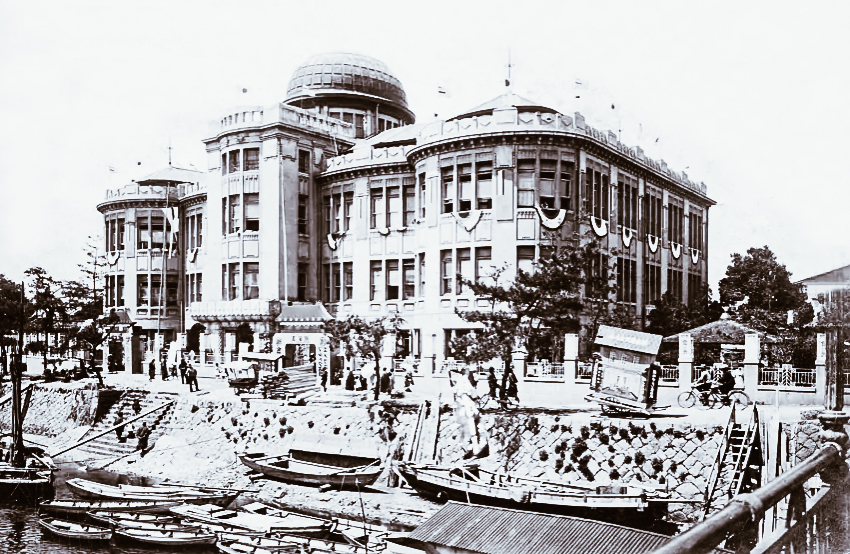
photo credits: focus.it
Nonostante la città fu rasa al suolo in quel tragico giorno, un solo edificio resistette portando per sempre con sé i tristi segni di ciò che avvenne. Stiamo parlando del Genbaku Dome (原爆ドーム, la cupola della bomba atomica). Tuttavia, prima della guerra Il palazzo era la sede dell’antica camera di commercio, oggi è classificato patrimonio mondiale dall’Unesco come testimonianza delle devastazioni delle armi nucleari.
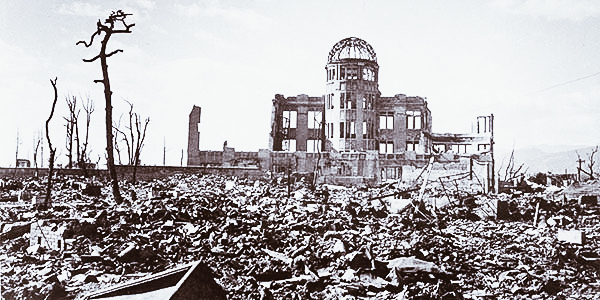
photo credits: agrpress.it
Visitare Hiroshima
Ciò che la storia ci ha lasciato deve essere un monito per il futuro e sia Hiroshima che Nagasaki ne sono un esempio vivente. A questo proposito, se avete intenzione di visitare Hiroshima, una delle tappe fondamentali è il Parco della Pace. Esso comprende il Museo della Pace e il Cenotafio del memoriale per le vittime della bomba atomica. Quest’ultimo, costruito dall’architetto Kenzo Tange, elenca le vittime della bomba il cui epitaffio recita: "Possano le anime qui riposare in pace, perché l’inferno non sia ripetuto". Non possiamo poi dimenticare la Cupola della bomba.
Per qualunque informazione riguardante l’Hiroshima Peace Memorial Museum potete visitare il sito web ufficiale in inglese.
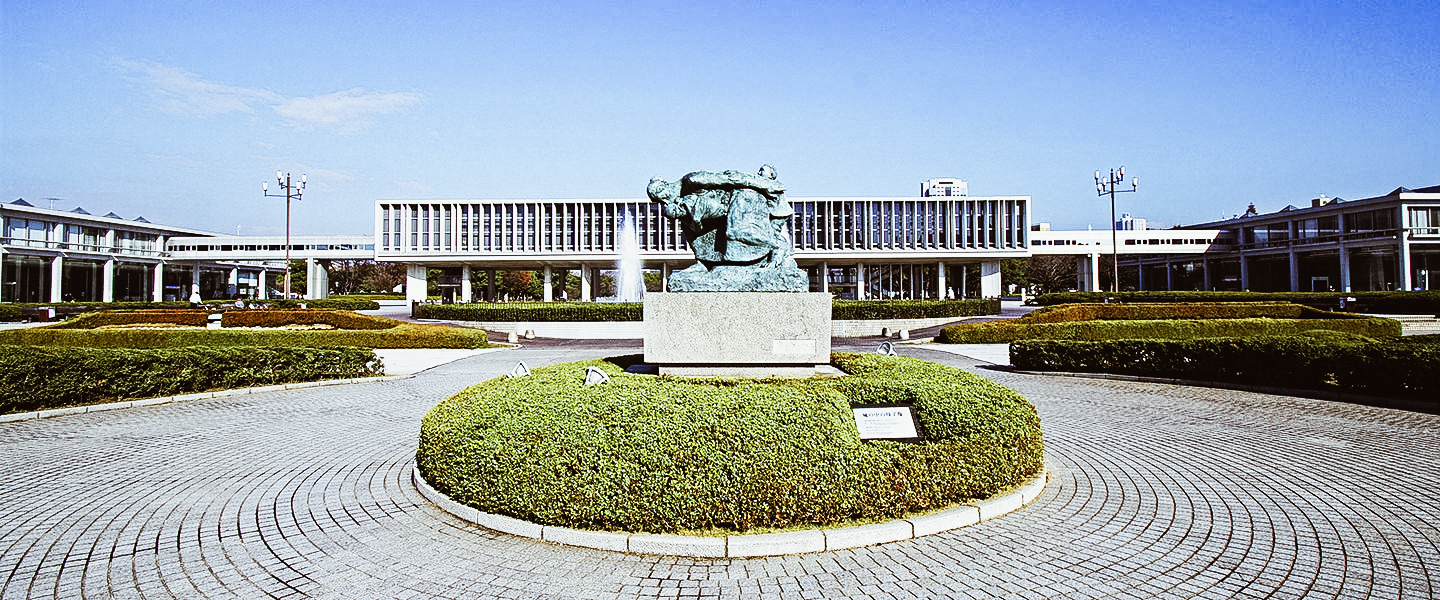
photo credits: visithiroshima.net
In città possiamo trovare altri interessanti musei, come l’Hiroshima Museum of Art. Qui il museo espone una vastissima collezione di arte moderna europea, dal romanticismo all’impressionismo. Inoltre, l’Hiroshima MOCA (museum of contemporary art) espone le opere di artisti giapponesi e stranieri posteriori alla Seconda Guerra Mondiale.
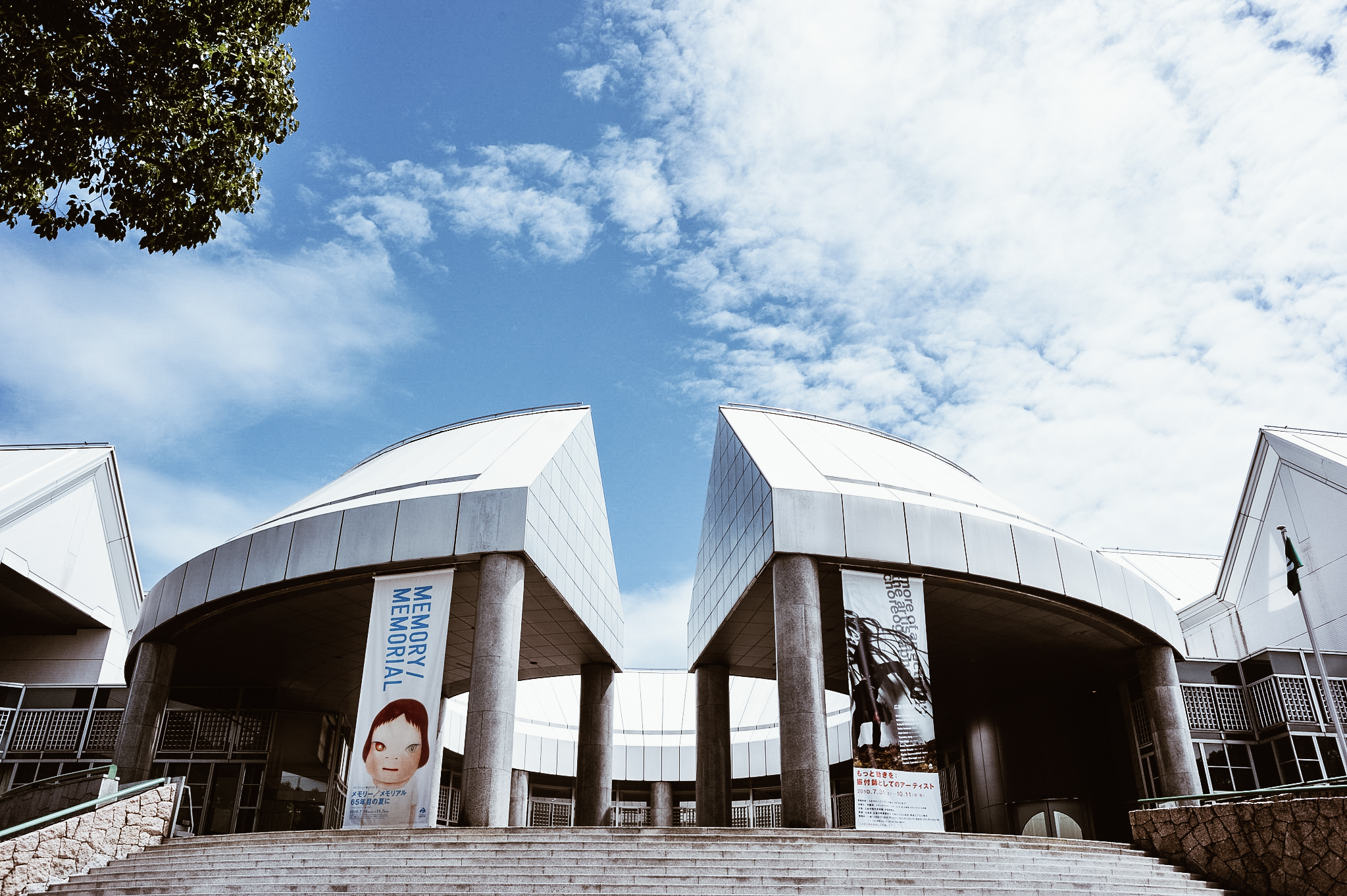
photo credits: maitreyoda
Il giardino Shukkei-en ed Castello di Hiroshima
Il giardino Shukkei-en fu costruito nel 1620 durante da Shigeyasu Ueda su ordine di Asano Nagaakira, daimyo del Hiroshima han (feudo). Utilizzato come residenza della famiglia Asano nel 1940, e dato poi alla prefettura di Hiroshima. Situato vicinissimo al punto zero dell’attacco nucleare, lo Shukkei-en subì ingenti danni e successivamente diventò un rifugio per le vittime della guerra. Dopo i lavori di ristrutturazione, riaprì al pubblico nel 1951.
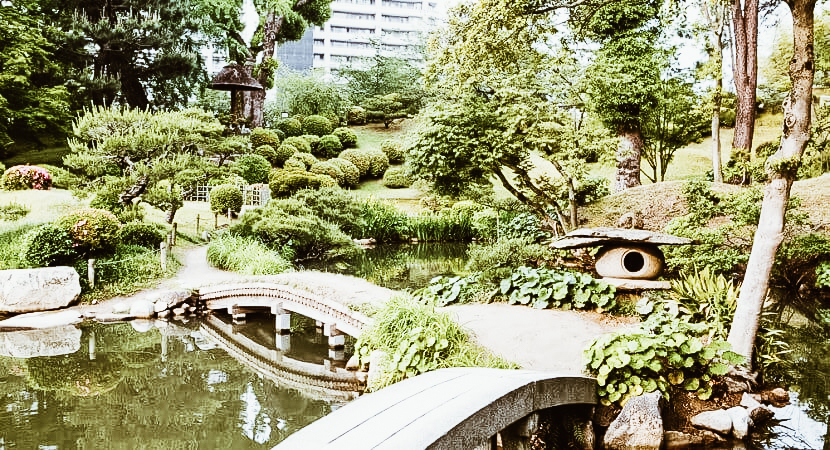
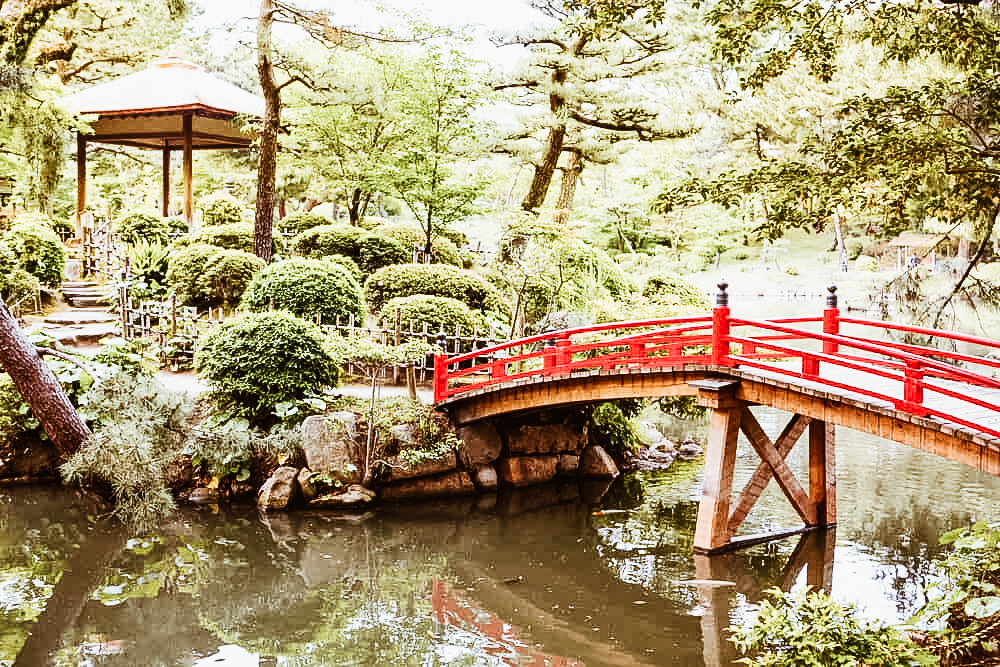
photo credits: thetruejapan.com
Strettamente collegato a questo meraviglioso giardino è il Castello. 広島城 Hiroshima-jō, chiamato anche 鯉城 Rijō letteralmente Castello-Carpa. Infatti, l’esterno completamente dipinto di nero, rimanderebbe all’immagine di una carpa nera. Costruito nel 1590, e divenne la dimora del signore del feudo, Mori Terumoto. Distrutto dal bombardamento atomico, fu ricostruito fedelmente nel 1958.
Attualmente è la sede del museo sulla storia e la cultura di Hiroshima circondato da un parco pubblico. Dalla cima del castello, si può godere di una splendida vista sul porto di Hiroshima e l’isola di Miyajima.

photo credits: fr.japantravel.com
Per scoprire tutte le attrazioni e i meravigliosi templi che sorgono ad Hiroshima, potete visitare il sito ufficiale della città (in inglese).
Nagasaki
Come Hiroshima, anche Nagasaki (長崎市) oggi è un importante centro portuale e di scambi commerciali internazionali.
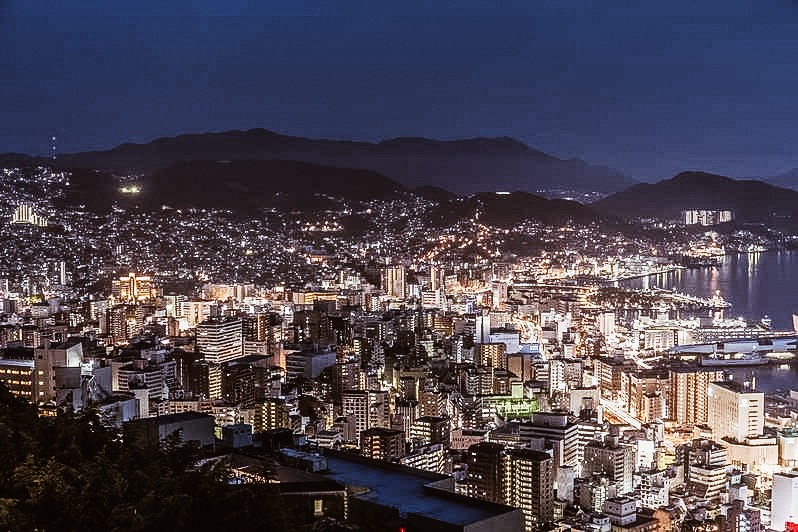
photo credits: getyourguide.it
Questa cittadina moderna con una florida economia marittima si sviluppò nell XI secolo, espandendosi rapidamente. Nel 1568 il daimyō Ōmura Sumitada, convertitosi al cristianesimo, rese Nagasaki un porto internazionale, aprendola così all'influenza europa. Quando però salì al potere il capo dell’esercito Toyotomi Hideyoshi, la città si trasformò in un incubo per i cristiani. Infatti, il 5 febbraio 1597, 26 persone che professavano la religione cristiana vennero crocifisse. Il cristianesimo fu bandito e si diffusero i kakure kirishitan (隠れキリシタン), i cristiani che professavano la propria fede in gran segreto e clandestinità. Fu solo con la Restaurazione Meiji a metà dell’800 che la libertà di religione fece di Nagasaki il centro del cattolicesimo giapponese. Nagasaki divenne ancora più forte sotto il punto di vista industriale.
Tuttavia, questo segnò anche la condanna di Nagasaki. Il 9 agosto 1945, a tre giorni dal bombardamento di Hiroshima, l’ormai famosa “Operazione Manhattan" da parte degli USA fu attuata. “Fat Man”, la seconda bomba atomica, cadde sulla città.
Trattandosi prettamente di una zona industriale ed essendo la bomba meno potente di quella di Hiroshima, le vittime dell'attacco furono sensibilmente inferiori. Nel 1949 Nagasaki venne rapidamente ricostruita e recuperò tutto il suo prestigio economico.
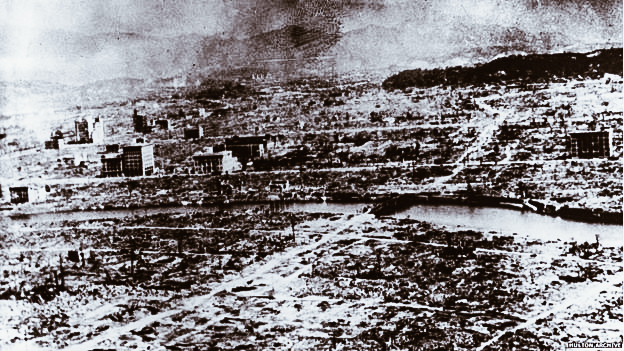
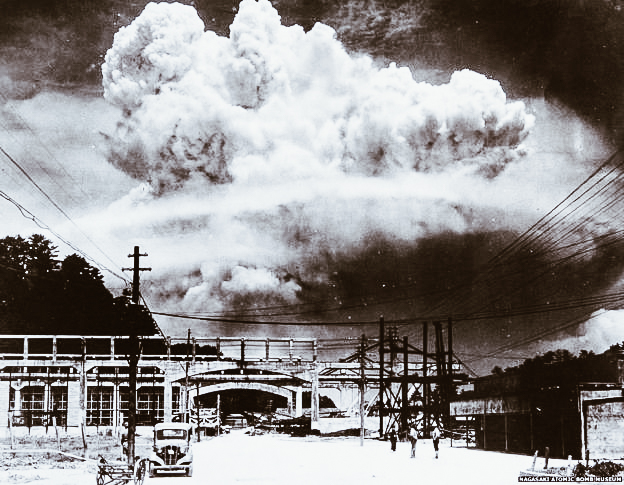
photo credits: bbc.com
Le ferite di Nagasaki
Simbolo della storia del Cristianesimo in Giappone è il Twenty Six Martyrs Museum che pepertua la memoria dei 26 martiri uccisi nel 1597.
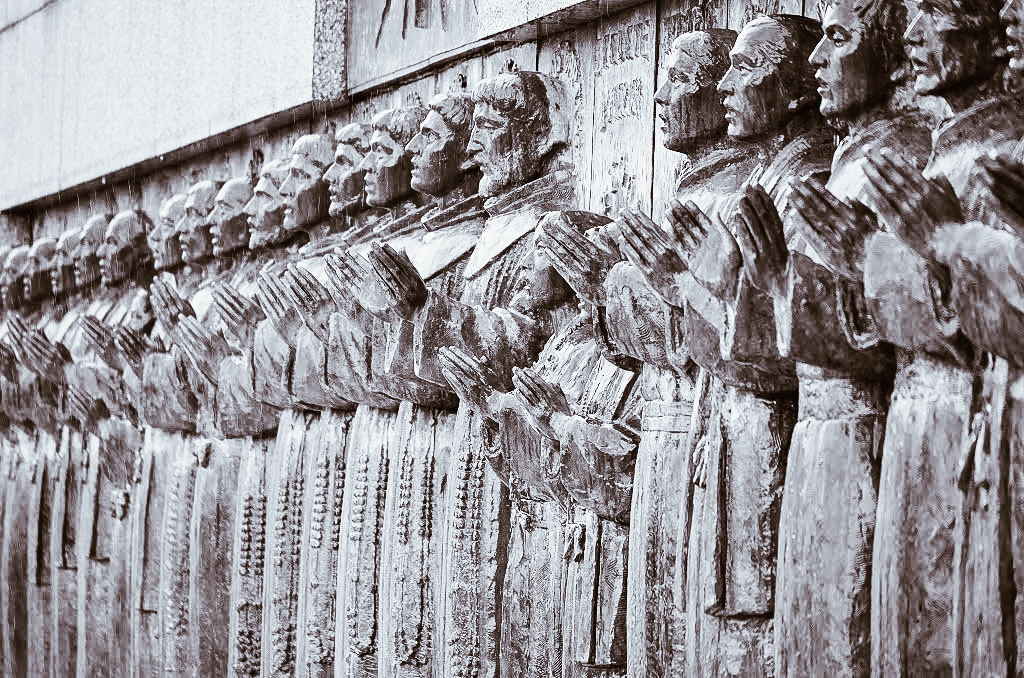
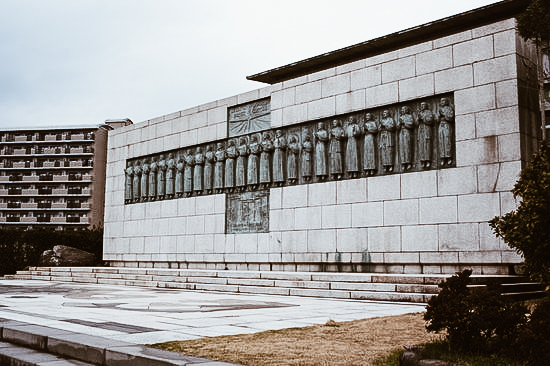
photo credits: tropki.com, tripadvisor.it
Naturalmente, come ad Hiroshima anche il Nagasaki Atomic Bomb Museum è una tappa fondamentale di questo viaggio. Un memoriale che mostra la città prima e dopo il bombardamento con l’intento di spingere le persone a riflettere su ciò che significa veramente pace e denuclearizzazione. Inoltre esattamente nel luogo dove scoppiò la bomba, sorge il Parco della Pace.

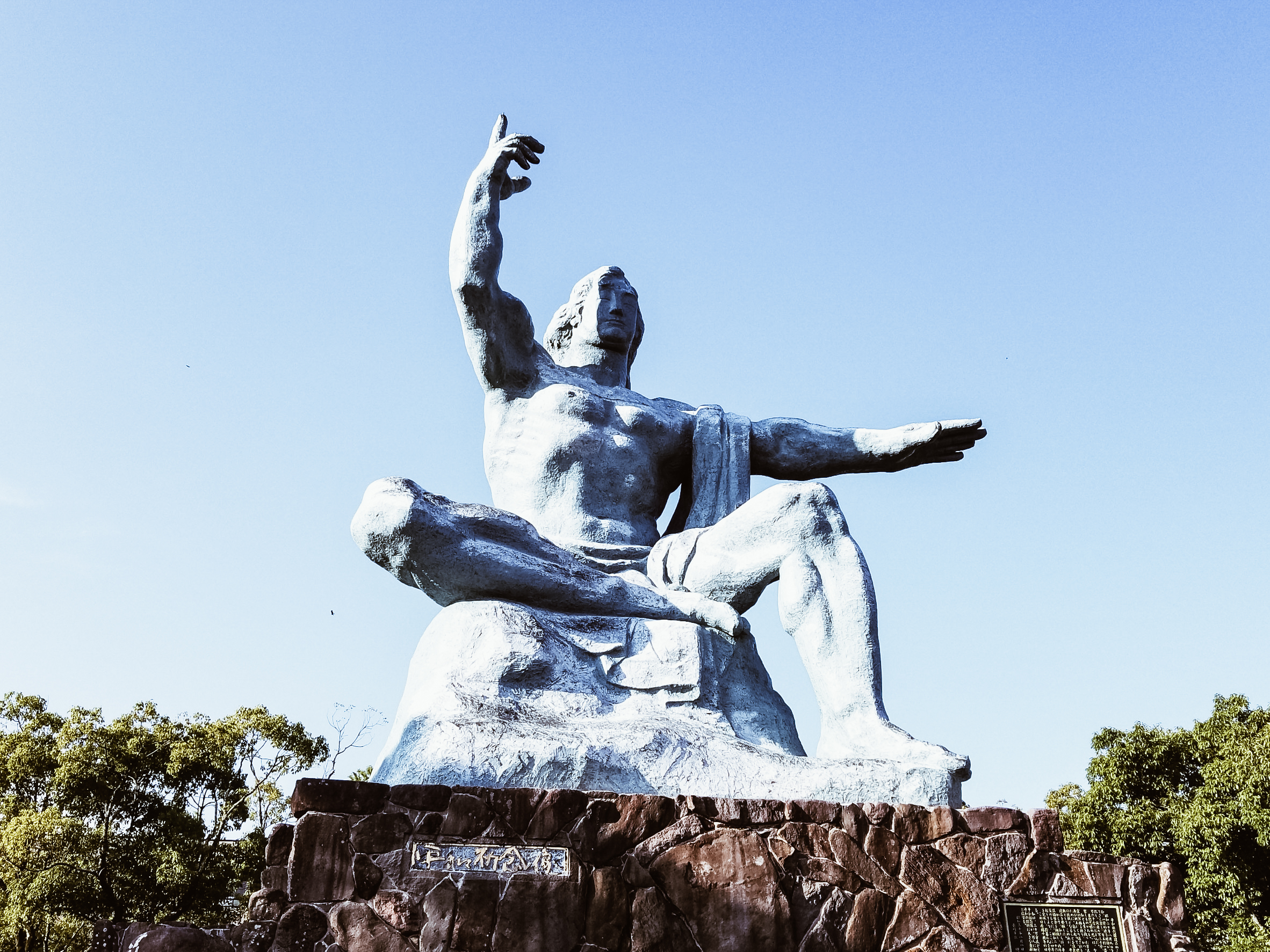
photo credits: welcomekyushu.com, wantabi.info
A 20 km dal porto, si trova Gunkanjima (Isola Hashima, l’isola corazzata), la piccola isola più popolata al mondo, o almeno così era fino agli anni 70. Affinchè potesse accogliere più popolazione possibile, l’isola assunse l’aspetto di una massiccia corazzata. Successivamente, è stata completamente abbandonata diventando un esempio di archeologia industriale che attira gli appassionati di rovine!
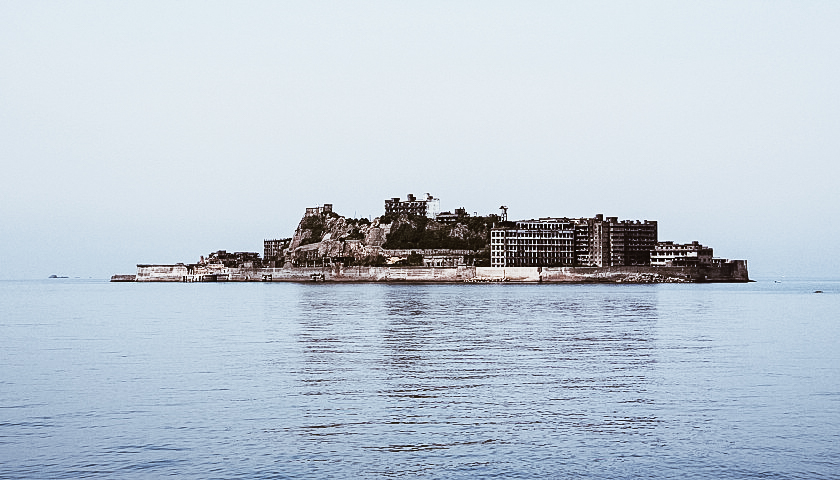
photo credits: japan-guide.com
Visitare Nagasaki
Se siete amanti delle viste mozzafiato delle città, imperdibile è la vetta del monte Inasa (稲佐山, Inasayama) che con i suoi 333 metri sorge vicino al centro di Nagasaki. Oltra all’auto e il bus, è possibile utilizzare la funivia per apprezzare appieno le bellezze della natura circostante!
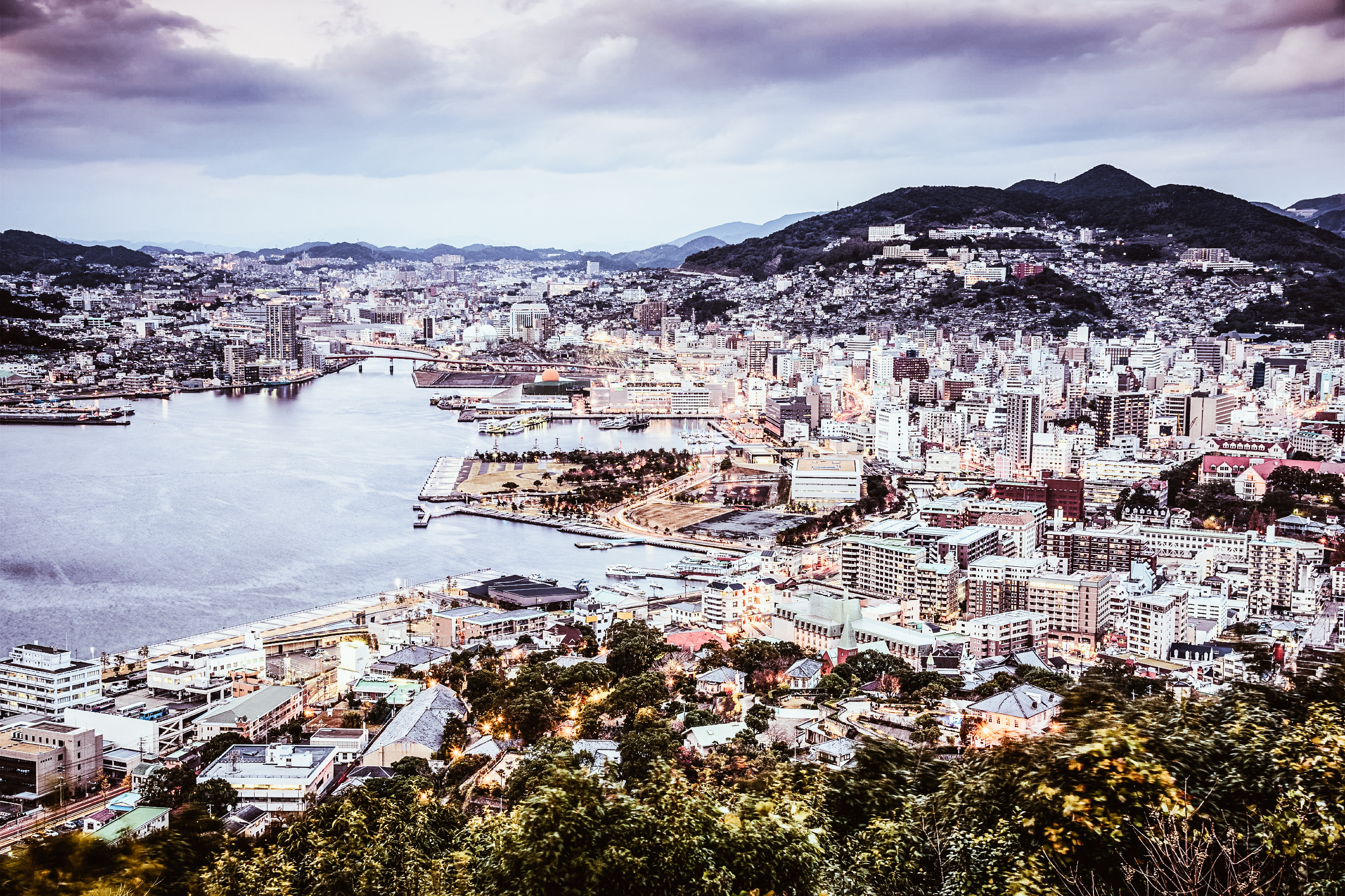
photo credits: travel.gaijinpot.com
Naturalmente il Giappone ci ha abituati a splendidi angoli di paradiso come i giardini. Infatti, a Nagasaki troviamo il Glover Garden. Situato sulla collina dove i mercanti occidentali si stabilirono dal 1850, è un vero e proprio museo dove è possibile visitare i palazzi dell’epoca.

photo credits: japanmeetings.org
Tra i numerosi templi, spicca qualcosa che non è facile trovare in Giappone. Stiamo parlando della basilica dei Ventisei Santi Martiri del Giappone (日本二十六聖殉教者堂) o Chiesa di Ōura (大浦天主堂 Ōura Tenshudō). Si tratta di una chiesa cattolica, risalente al periodo Edo. Per molti anni è stata l'unico edificio in stile occidentale iscritto nel Tesoro nazionale del Giappone ed è considerata la più antica chiesa del Giappone.
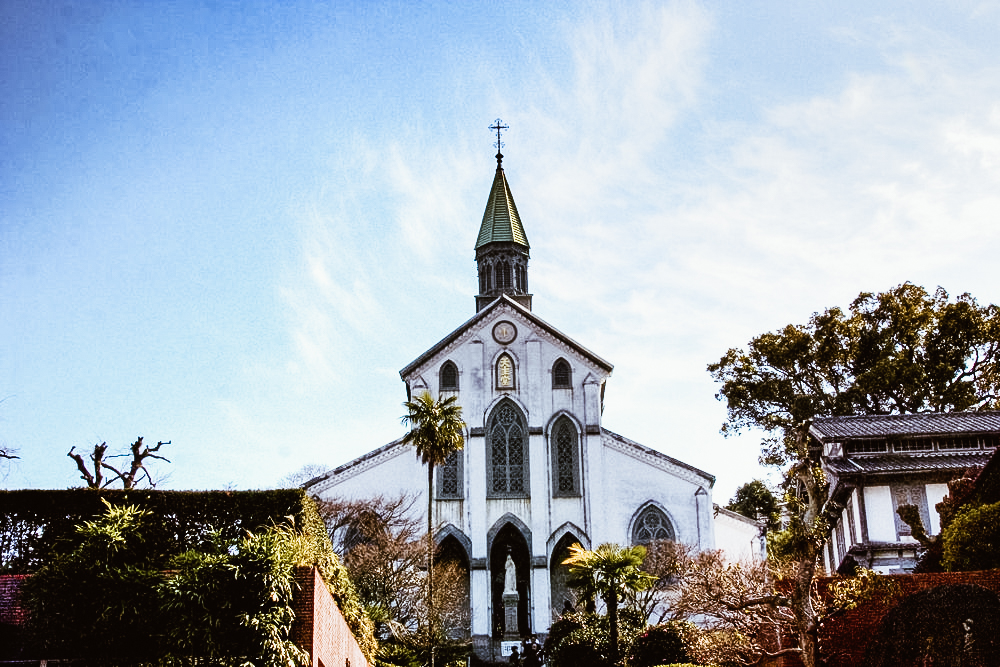
photo credits: yitubao.com
Dietro la triste storia che accomuna queste due città, c’è la grande forza di un popolo che ha sempre saputo rialzarsi. Hiroshima e Nagasaki sono testimonianze storiche che abbiamo voluto ricordarvi e che troppo spesso vengono considerate come realtà lontane, ma che invece devono fare profondamente riflettere, per non dimenticare ciò che è successo.







